Walton Heath’s Old Course seemed to always be up with Sunningdale’s Old Course in the rankings as the top heathland course. They were often the only two heathland courses on Golf Magazine’s World Top 100. I suspect that a large part of this had to do with the fact that the Old Course—or at least a composite course that consisted mostly of holes from the Old—had hosted many big tournaments, including the 1981 Ryder Cup.
But attitudes seemed to have changed with time. Swinley Forest, St. George’s Hill, and Sunningdale New are now more in favor with the rankings. Maybe that has to do with renewed appreciation for the big Golden Age architects like Harry Colt. If that’s the case, the Old—really both courses at Walton Heath—and Herbert Fowler’s work in general deserve a closer look.
Without making a judgment of the relative merits of Walton Heath to Colt’s S courses, there’s a lot of character in the work that Fowler did at Walton Heath. The land is fairly tame so he generated earthworks—odd mounds and trenches—that create a lot of challenge and interest. I especially appreciate them because they are an efficient way of generating interest. You just need one heather-covered mound or one 10-yard trench somewhere off the tee to make a hole interesting. Same at the greens; almost all the greens sit on the lay-of-the-land but there’s tremendous variety in the size, pitch, and interior contour. Then like in the fairways trenches (some sand-filled, some not) and the occasional mound create interest around the edges. Almost all of the shaping on Walton Heath appears to be contained to small (a few hundred square feet) areas. This contrasts with Colt’s nearby work, where there was a lot of earthmoving to construct greens and bunker complexes.
And in line with recent trends, Walton Heath is also a model of tree management and turf—even among heathland courses, which are mostly excellent on both of these. So whether the Old Course belongs in the World Top 100 or not—I don’t know; I haven’t played enough of them to make that call—it and its sister the New Course deserve closer attention because they generate a lot of interest in a efficient way. And the green contours on both are excellent—something that is not true of even most of the best heathland courses.
The Old Course starts in a similar way to several other London-area courses including the Addington, Liphook, and Knole Park—on a par 3. And I think in all four cases (not 100% sure about Knole Park), the courses weren’t intended to start on a par 3. The Addington and Liphook originally started on other holes. I believe that the Old’s first has always been its first hole, but it used to be a par 4, with its tee behind the entrance drive some 80 yards back. I think that it’d be a better start that way because the current 235 yard par 3 is a nasty way to start. It would also have been a good short par 4 from a strategic perspective because the main hazard is at the front right of the green and there’s a bunker just left of the left guarding the optimal landing area.
But attitudes seemed to have changed with time. Swinley Forest, St. George’s Hill, and Sunningdale New are now more in favor with the rankings. Maybe that has to do with renewed appreciation for the big Golden Age architects like Harry Colt. If that’s the case, the Old—really both courses at Walton Heath—and Herbert Fowler’s work in general deserve a closer look.
Without making a judgment of the relative merits of Walton Heath to Colt’s S courses, there’s a lot of character in the work that Fowler did at Walton Heath. The land is fairly tame so he generated earthworks—odd mounds and trenches—that create a lot of challenge and interest. I especially appreciate them because they are an efficient way of generating interest. You just need one heather-covered mound or one 10-yard trench somewhere off the tee to make a hole interesting. Same at the greens; almost all the greens sit on the lay-of-the-land but there’s tremendous variety in the size, pitch, and interior contour. Then like in the fairways trenches (some sand-filled, some not) and the occasional mound create interest around the edges. Almost all of the shaping on Walton Heath appears to be contained to small (a few hundred square feet) areas. This contrasts with Colt’s nearby work, where there was a lot of earthmoving to construct greens and bunker complexes.
And in line with recent trends, Walton Heath is also a model of tree management and turf—even among heathland courses, which are mostly excellent on both of these. So whether the Old Course belongs in the World Top 100 or not—I don’t know; I haven’t played enough of them to make that call—it and its sister the New Course deserve closer attention because they generate a lot of interest in a efficient way. And the green contours on both are excellent—something that is not true of even most of the best heathland courses.
The Old Course starts in a similar way to several other London-area courses including the Addington, Liphook, and Knole Park—on a par 3. And I think in all four cases (not 100% sure about Knole Park), the courses weren’t intended to start on a par 3. The Addington and Liphook originally started on other holes. I believe that the Old’s first has always been its first hole, but it used to be a par 4, with its tee behind the entrance drive some 80 yards back. I think that it’d be a better start that way because the current 235 yard par 3 is a nasty way to start. It would also have been a good short par 4 from a strategic perspective because the main hazard is at the front right of the green and there’s a bunker just left of the left guarding the optimal landing area.
After the first, we have the typical British 60 mph. two-lane highway road crossing. A lot of people knock golf for being ‘not a sport,’ but it feels pretty sporting to me to have to run for your life to avoid ending up as road kill. If a game involves cheating death, it’s a sport…although I guess that raises the question of whether drunk cart driving on some of northern Michigan’s mountainous courses is a sport…
Anyway the second hole on the Old is the first hole for tournaments and it’s an outstanding long par 4. The drive is semi-blind over a ridge. The first tree on the right provides an important visual cue—a good drive on that line or right of it will be in junk.
Anyway the second hole on the Old is the first hole for tournaments and it’s an outstanding long par 4. The drive is semi-blind over a ridge. The first tree on the right provides an important visual cue—a good drive on that line or right of it will be in junk.
The uphill approach is beautiful and plays to one of the best greens on the property. It’s large and Fowler appears to have done zero shaping to construct it. There are some mounds left of the green but they’ve become obscured by trees.
I really liked the short par 4 third. The strategy is simple—if you’re near the left fairway bunker about 230 out from the back tees, you’ll have a good angle into the narrow but deep green. But as we saw on the New Course, this isn’t all apparent from the tee because there are two trench bunkers at the start of the fairway that obscure the visuals.
To me, the long par 4 fourth is exemplary of Fowler’s shaping. There’s a partially sand-filled trench up the right but the main feature for most is a sand filled pit right in the middle of the fairway about 250 yards from the medal tees. Unlike the junk that bisects several fairways on the New, it’s possible to go around this bunker, but you have to be a champion accurate driver.
The approach to the green is an absolute delight. Maybe my favorite feature on the whole course is this random mound in the middle of the fairway about 70 yards short of the green (maybe this is where they put the dirt from the driving zone pit). If you can carry this, the green is wide open but there are sand and non-sand-filled trenches on both sides for the inaccurate.
The par 4 fifth is just under 400 yards from the medal tees, which are right next to the fourth green. From here, it’s only about 210 to get past the bunker on the right and the drive runs downhill—that’s probably why they built championship tees 100 yards further back. The approach is downhill to another green that’s open in front. And that’s when things become noteworthy: this is one of the best greens that I’ve seen not only in England, but anywhere. It’s deep and slopes back-to-front but the greatness is in the little bumps and ridges across its surface. I don’t know why more architects haven’t been able to create greens with this combination of interest and lack of severity. I could spend half a day just studying this green.
With the long par 4 sixth the difficulty increases and we lose some character for a few holes. The holes around the turn are not Fowler originals; they were altered to make room for the M-25. This sixth probably has the narrowest fairway this side of Winged Foot—I tried to lay-up and still hit it in the left fairway bunkers. The green is very tough to hit; it’s elevated over a pot bunker and a grass pit and the entrance is narrow.
I really liked the not-Fowler par 3 seventh. While the grass hollows short of the green aren’t great replicas of Fowler’s, they still generate interest. I also liked the convex edges around the green.
The par 5 eighth just beats the ninth on the New for a dubious distinction: loudest hole that I’ve ever played, thanks to the M-25 50 yards through the trees behind the green. There isn’t a lot of interest from tee to green but the green is small, dome-shaped, and a tough target.
The ninth is a decent medium-length par 4. It’s helpful to look at your pin sheet on the tee (they give you one with exact hole locations) because there are bunkers at the front left and right and you want to play to the opposite side of the fairway to leave the best angle.
Although we have a bit of a walk back to reach the tee, the par 4 tenth is a very good hole. There’s a bunker on the left about 220 yards out that you’ll want to skirt to open the angle to the green. This isn’t the most important thing in the world as the green is mostly open in front, but it can help if the pin is back right.
There’s nothing tricky about the ~200 yard par 3 eleventh—you just have to hit a good mid/long iron. Don’t go at the pin if it’s on the left like it was on this day…and certainly don’t go left of the green like I did (actually it wasn’t too hard a shot from over there).
Twelve is a short par 4 that gets some accolades, but I didn’t find it to be anything special. There’s a bunker on the right about 215 yards out and you just want to go somewhere left of it. You want to be near it because the green angles from front-right to back-left and the further you go, the tougher the angle becomes. There’s also a dirt road that bisects the fairway just right of this bunker (the hole doglegs right). A long hitter could carry the road and go for the green, but there’s so much junk up there that I don’t think that this would make much sense. Better to hit a 220 yard lay-up and wedge on. Thinking back on it (with some help from Google Earth), it seems to be a pretty good hole and if I played it once or twice more, I might agree with others about its merit.
After an only occasionally interesting middle stretch, I think that the last six holes constitute one of the strongest stretches in the London area. The drive on the par 5 thirteenth (one of three in this stretch) is very challenging; the bunkers on the right start at about 215 from the medal tees and the further you go, the more that they narrow the fairway.
I hit a perfect drive just past the bunkers but the approach is also disconcerting. That’s because the green is just left of the right side tree line; unless you’re laying up, you don’t want to go left or over the next fairway bunker. The green is fronted by two proper pot bunkers, which you don’t see on other heathland courses but look appropriate on the open plain of Walton Heath.
If I had to pick a hole that exemplifies heathland golf, it might be the par 4 fourteenth. This hole sits in the middle of the property and you can see almost all of both courses from here. The placement of the fairway hazards is exceptional. From the 510 yard medal tees, the bunker on the right is about 240. If you shy away from that and play up the left side, there’s a hidden Fowler grass trench about 280 out. It’s better to approach the green from the left side because it’s deep and angles from front left to back right. After #5, this might be the most undulating green on the course.
Fifteen is very tough—narrow, with bunkers and heathery mounds all up the right side. The approach is over a large sand-filled trench 50 yards short of the green to a very large green. It slopes away to the back and I found it quite difficult to putt.
According to the yardage guide, the par 5 sixteenth was a favorite of golf writer Bernard Darwin. The landing zone is wide and if you can a gentle draw, the slope will carry your ball well down the fairway—I almost reached the right fairway bunker, which was something like 340 from the tee that I was playing…and I only drink the occasional protein shake.
Darwin was especially complementary of the approach. He described the green as “perched defiantly on something of a crest with a most cavernous bunker eating into its right-hand side.” I thought that like most of the greens at Walton Heath, the green rested very comfortably on the land. But I looked back at some of my pictures of the right side and back of this green from when I played the second hole on the New Course earlier in the day and I realized that the entire right side is built up. In any case, I agree with Darwin’s assessment of the front right bunker.
A bunch of holes cross each other this point and you could take advantage of the confusion to play the second on the New Course and get a freebee seventeen holes (just say that you’re bad at counting and didn’t notice that the flags on the two courses were a different color). The par 3 seventeenth on the Old has deep bunkers at its front left and right. The green is larger than it appears.
The Old finishes on another solid par 4. Bunkers narrow the fairway at 225 so you either need to lay up or hit an accurate drive. The approach to the deep but narrow features one final carry over a sandy trench 20 yards short of the green. Err short because there are bunkers left and right at the midpoint of the green.
So ended one of my best 36 hole days of golf. I’m glad that we’ve gotten a few more great 36 hole options in my home state of Michigan with the addition of second 18s at Forest Dunes and Arcadia Bluffs. But while they aren’t really alternatives (unless you’ve got deep pockets or a lot of frequent flyer miles), I think that I’d take 36 at Walton Heath over either of those (incidentally, the look of the Loop reminds me of Walton Heath). There’s a charm to the architecture here that few courses have. Both courses are playable for high handicappers but plenty challenging for low handicappers—if you don’t mind many 100 yard walk backs to the championship tees.
As we’ve seen throughout these photographs, the land at Walton Heath is fairly tame. There can’t be more than 10 or 15 feet of elevation change on any hole. And the slopes are gradual; there aren’t any small scale undulations like you’d find on a links course. Much of both courses is flat. That makes both courses even more impressive. Without really building greens at all, Fowler used the pitch of the land plus a variety of mounds and trenches to create substantial strategic and aesthetic interest. I’ve played at least a few dozen courses on land that was better than this. Almost none of them were as good. If you don’t believe that you can build a great course on flattish land, you should see Walton Heath and contemplate why it works so well.
As we’ve seen throughout these photographs, the land at Walton Heath is fairly tame. There can’t be more than 10 or 15 feet of elevation change on any hole. And the slopes are gradual; there aren’t any small scale undulations like you’d find on a links course. Much of both courses is flat. That makes both courses even more impressive. Without really building greens at all, Fowler used the pitch of the land plus a variety of mounds and trenches to create substantial strategic and aesthetic interest. I’ve played at least a few dozen courses on land that was better than this. Almost none of them were as good. If you don’t believe that you can build a great course on flattish land, you should see Walton Heath and contemplate why it works so well.
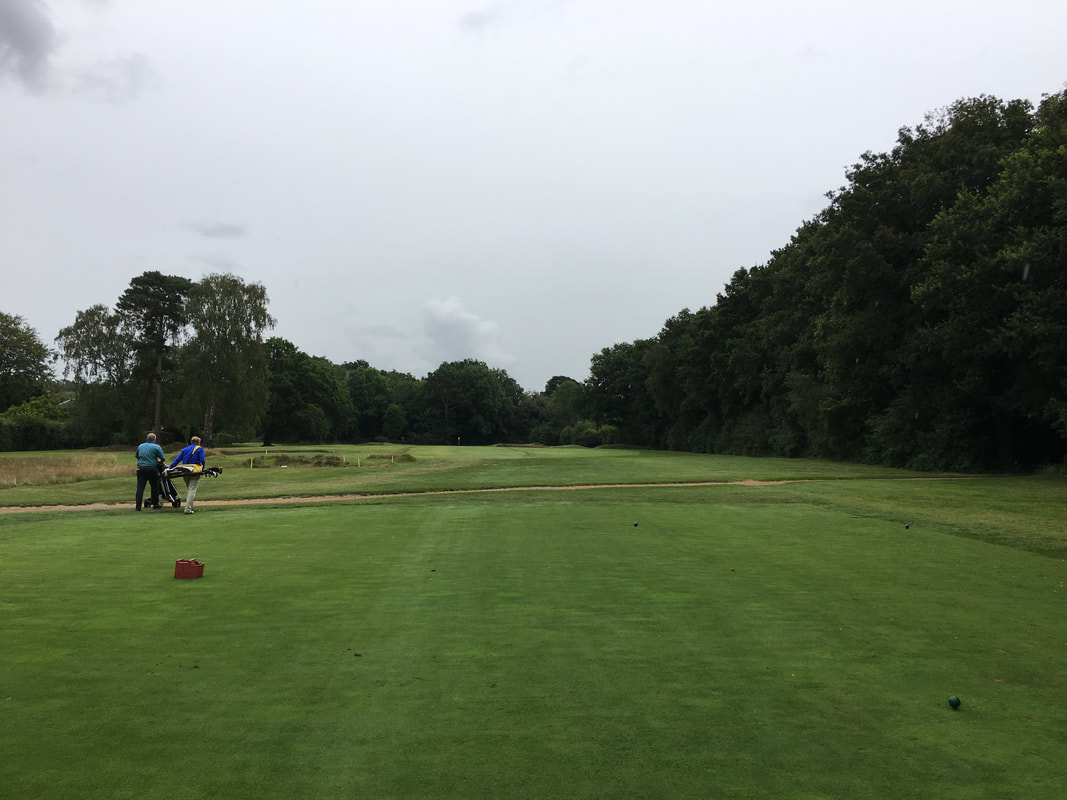
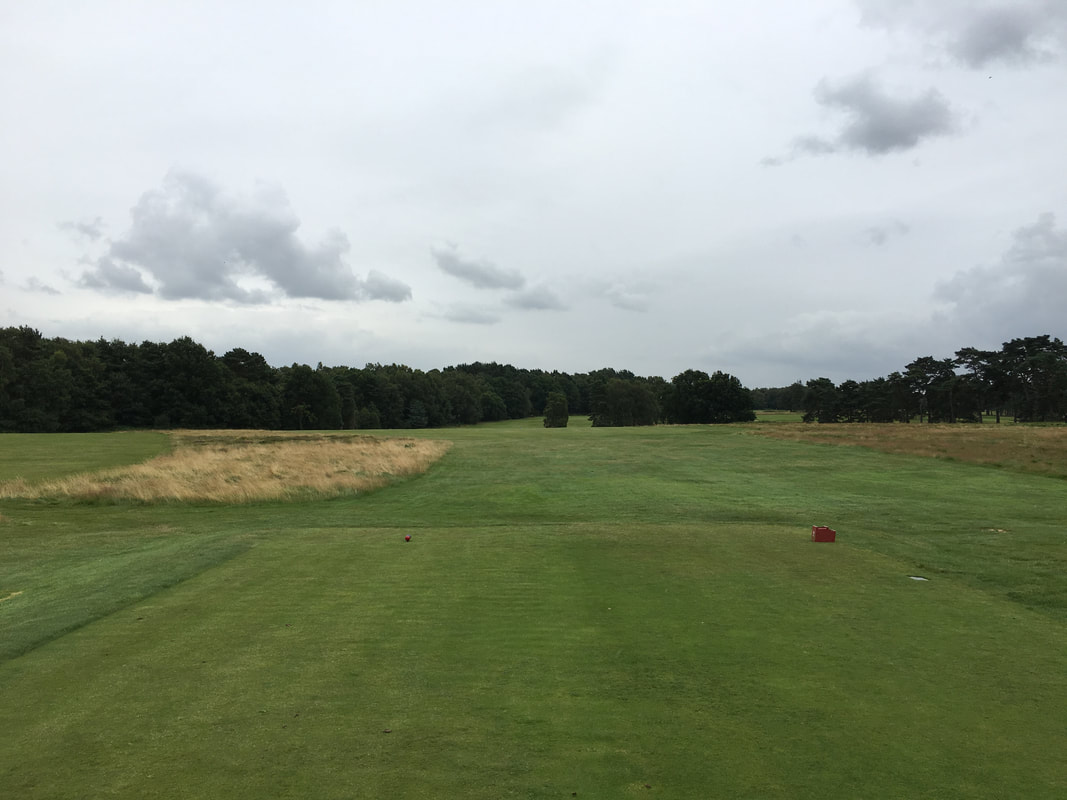
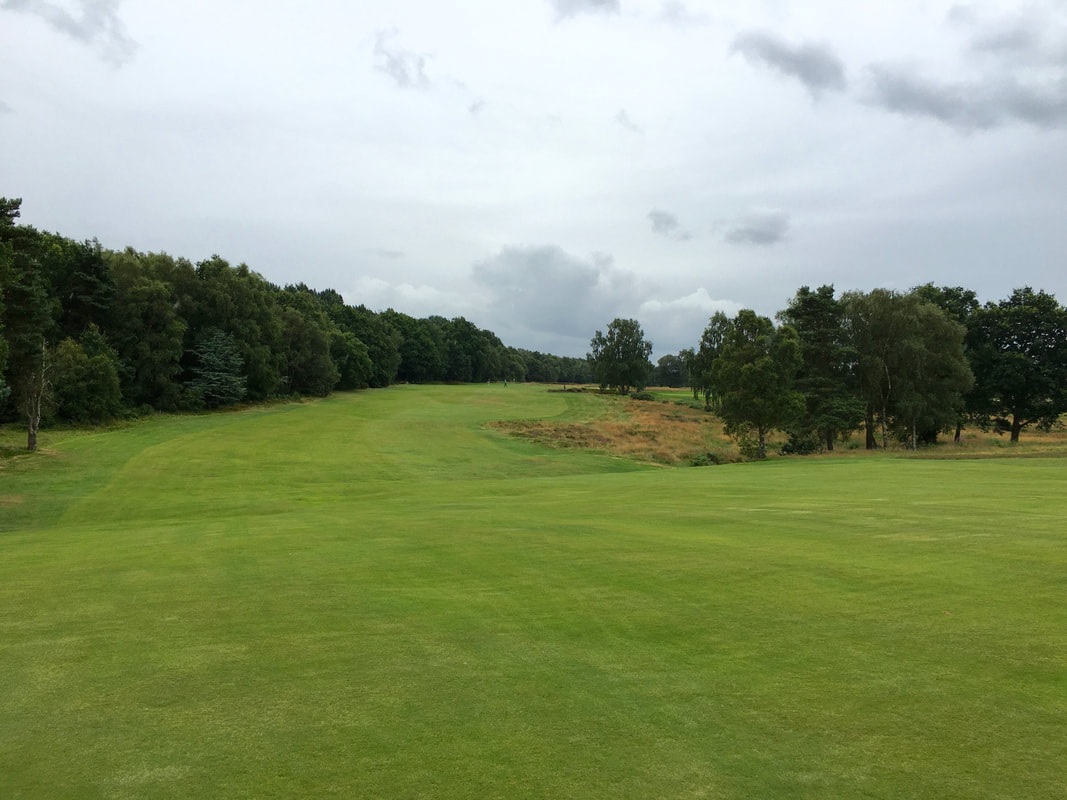
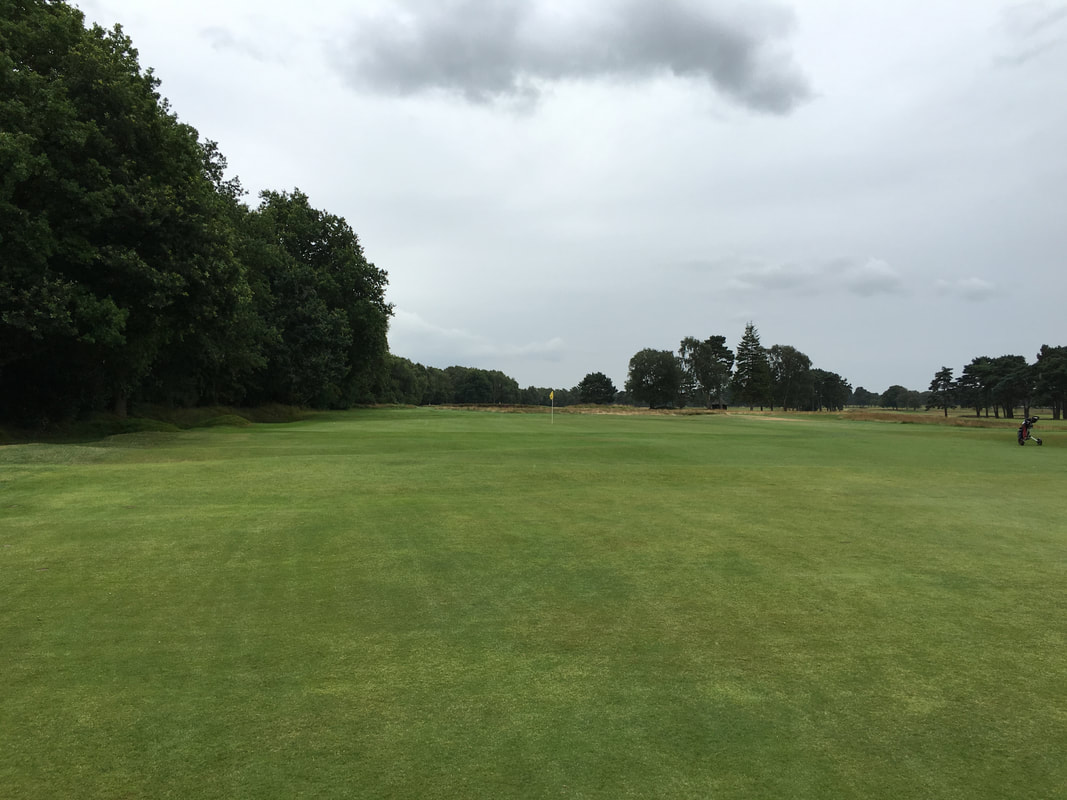
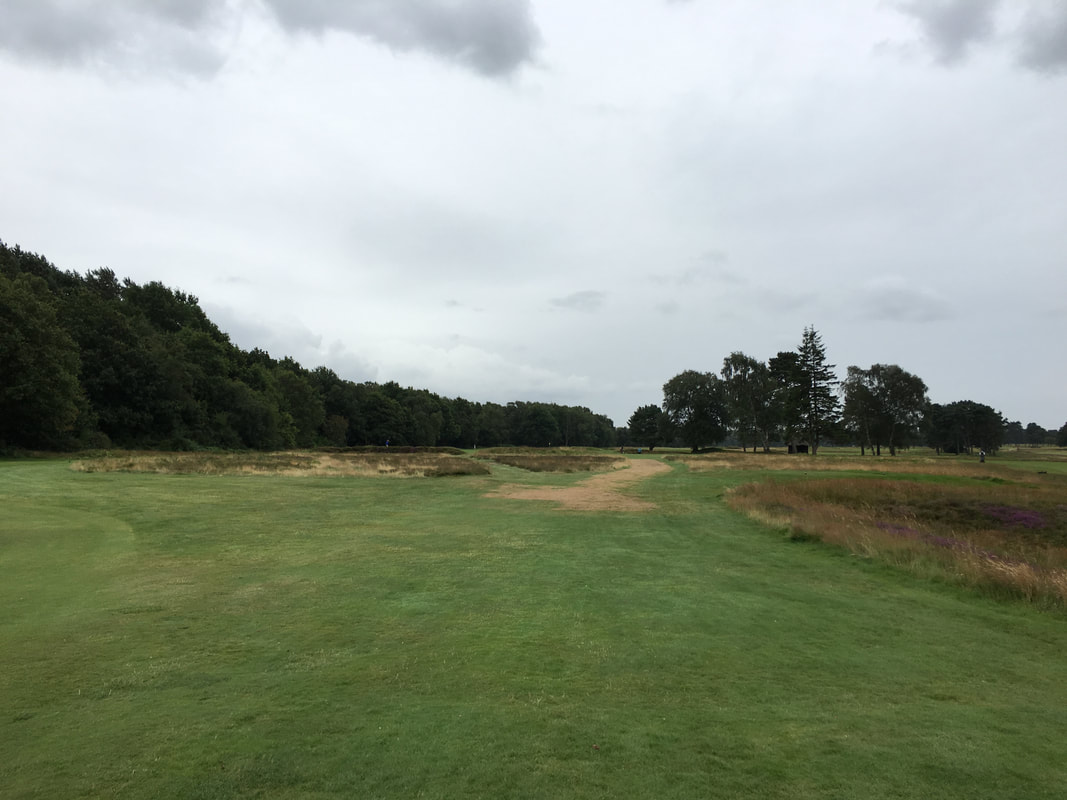
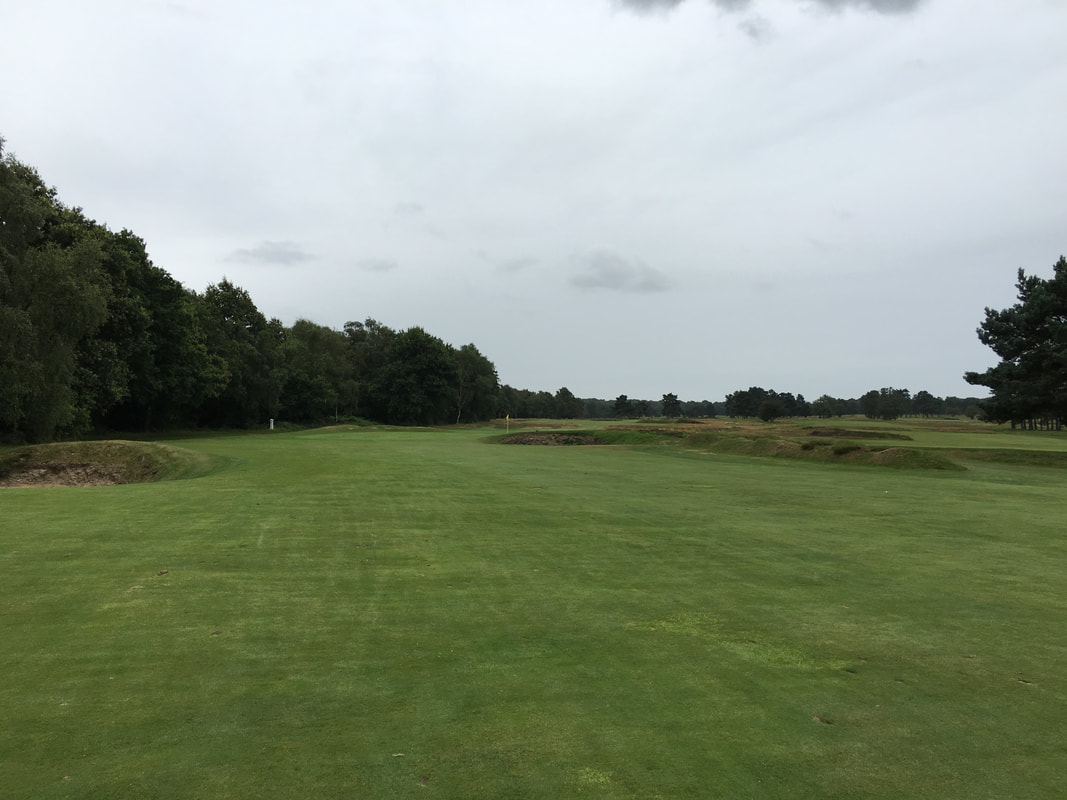
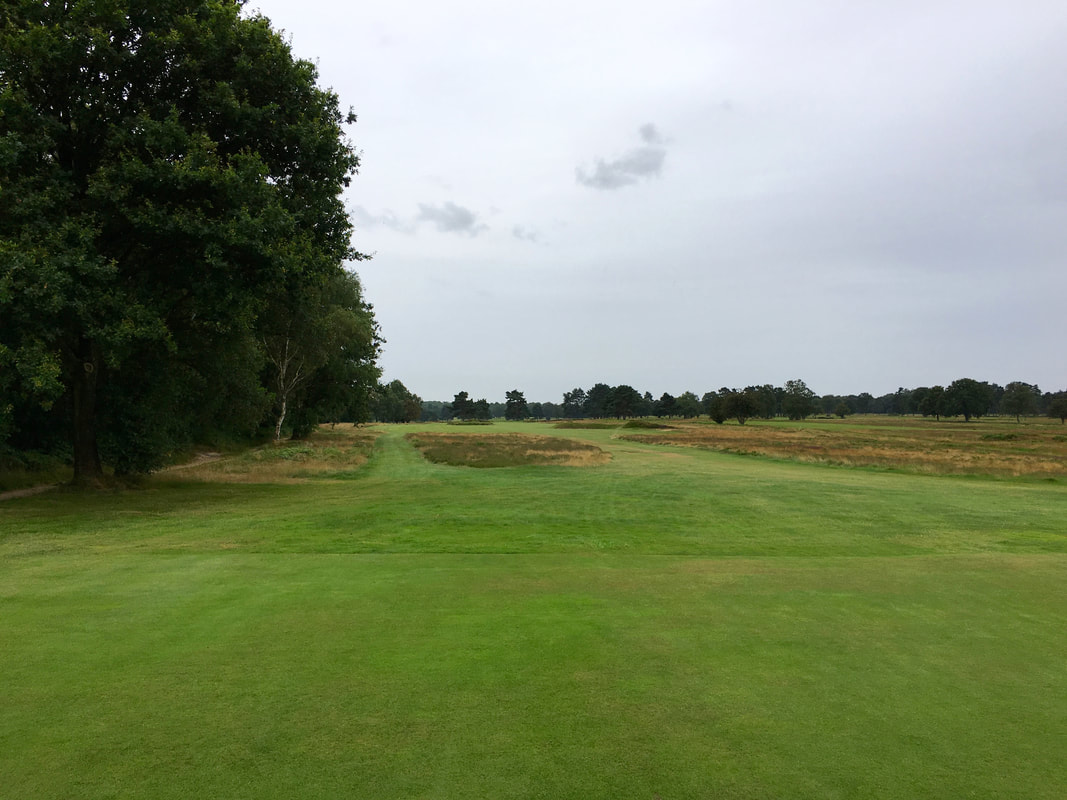
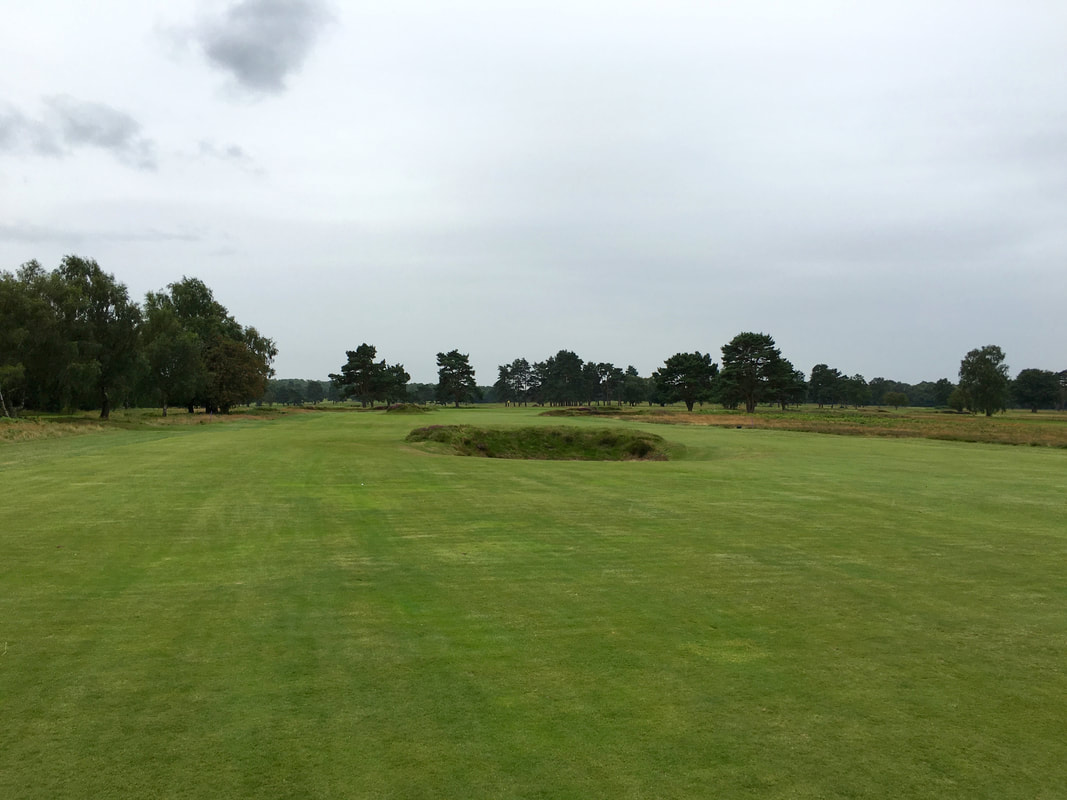
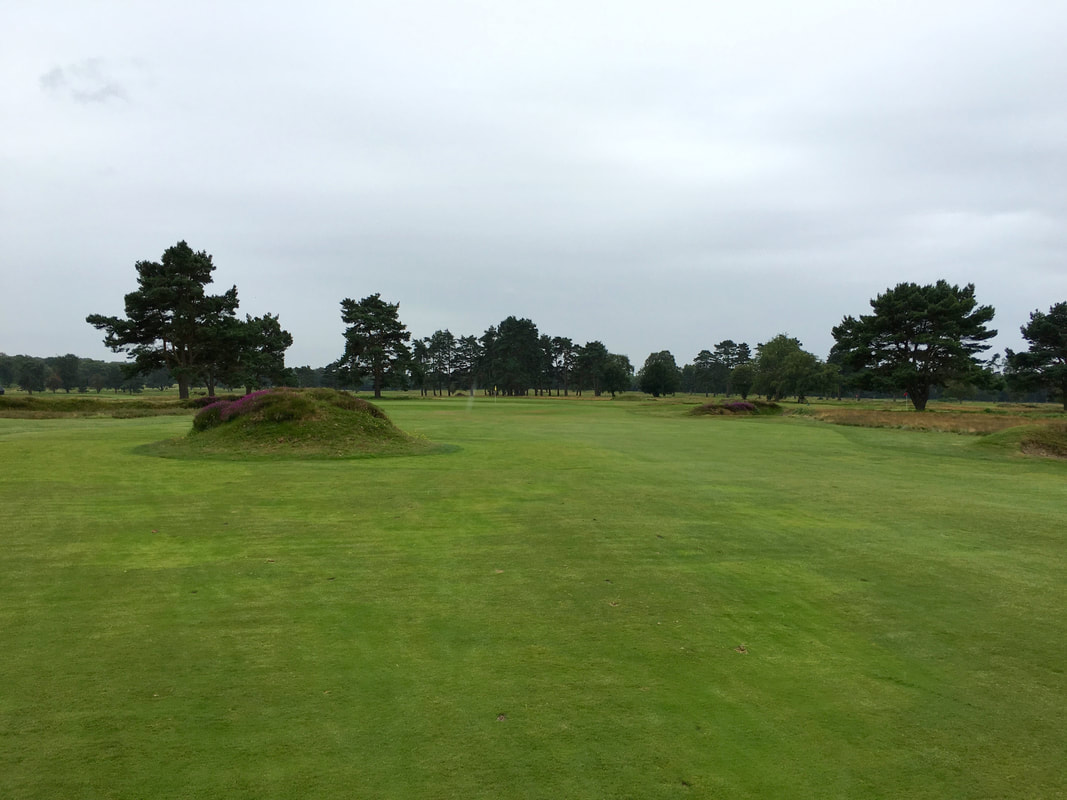
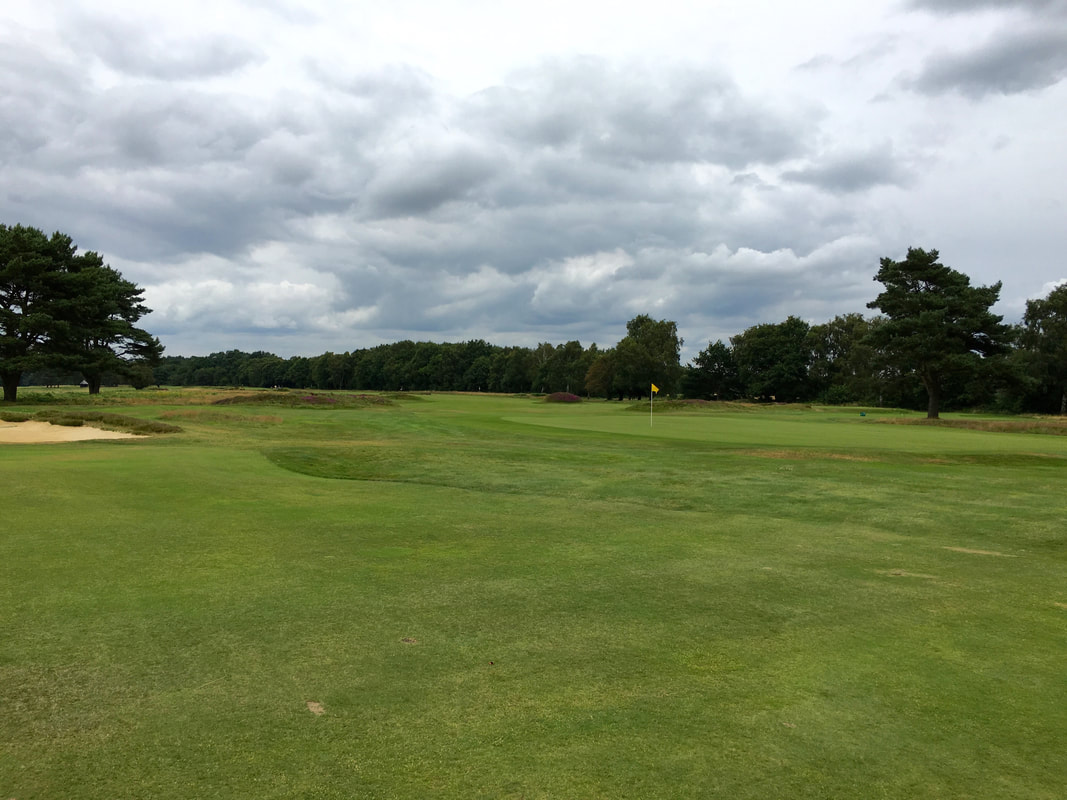
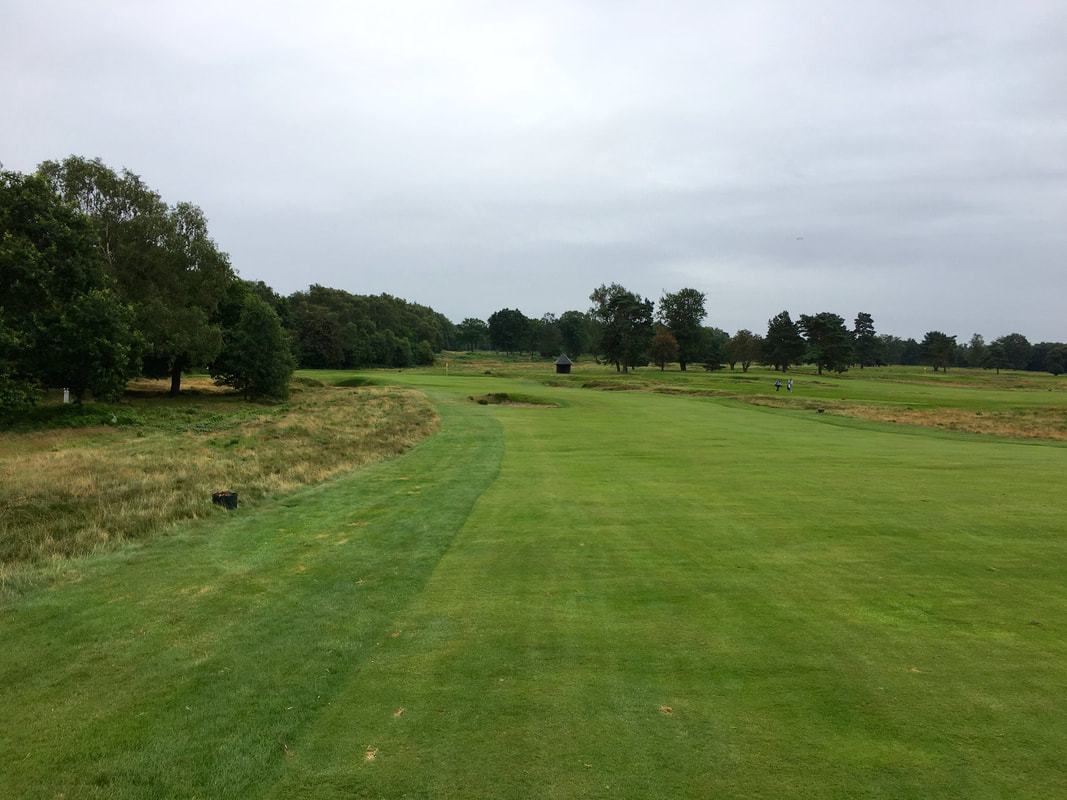
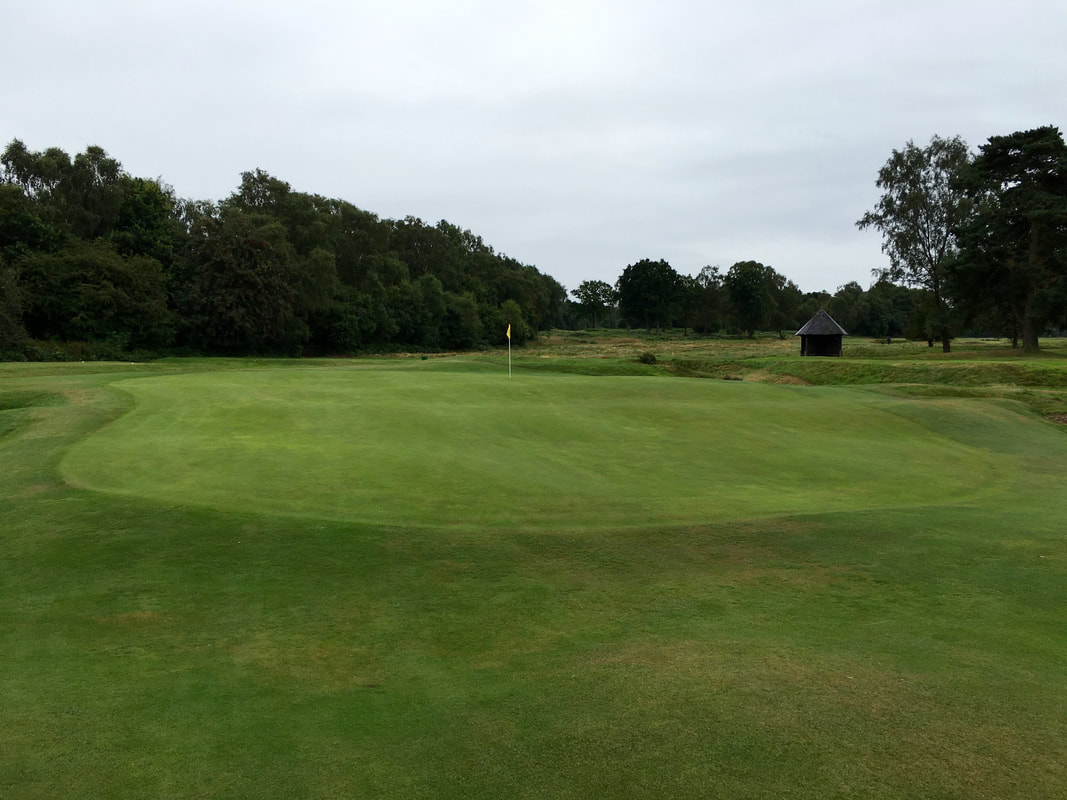
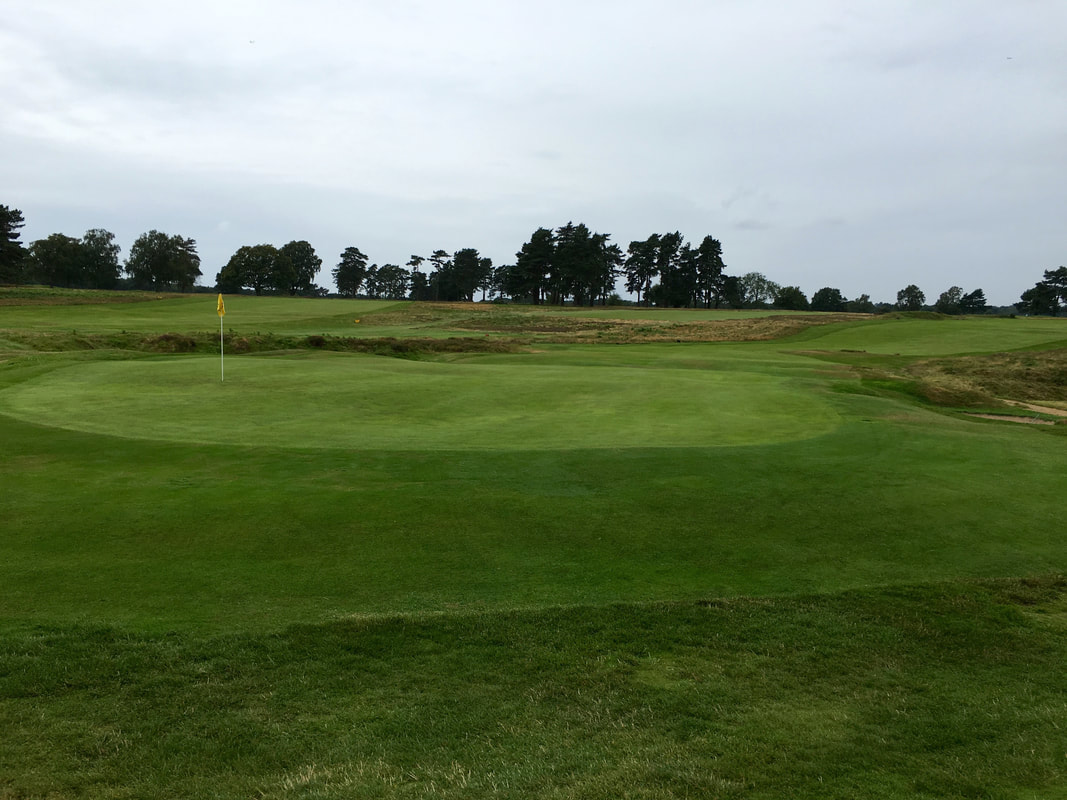
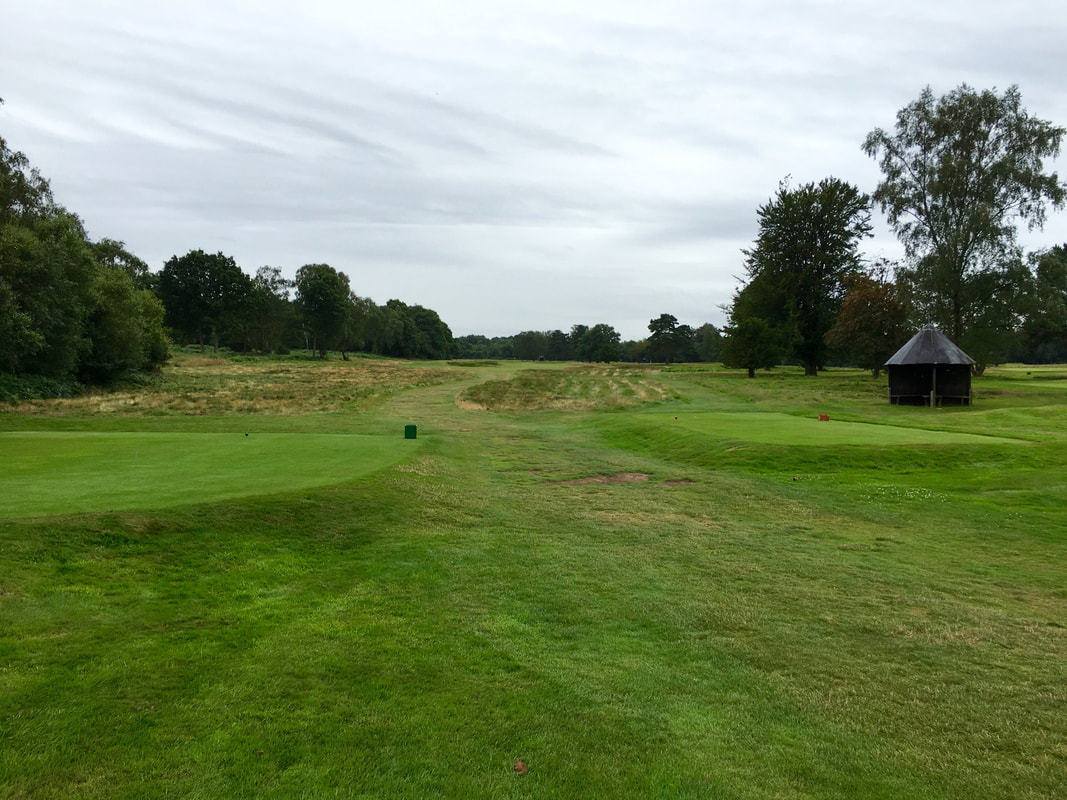
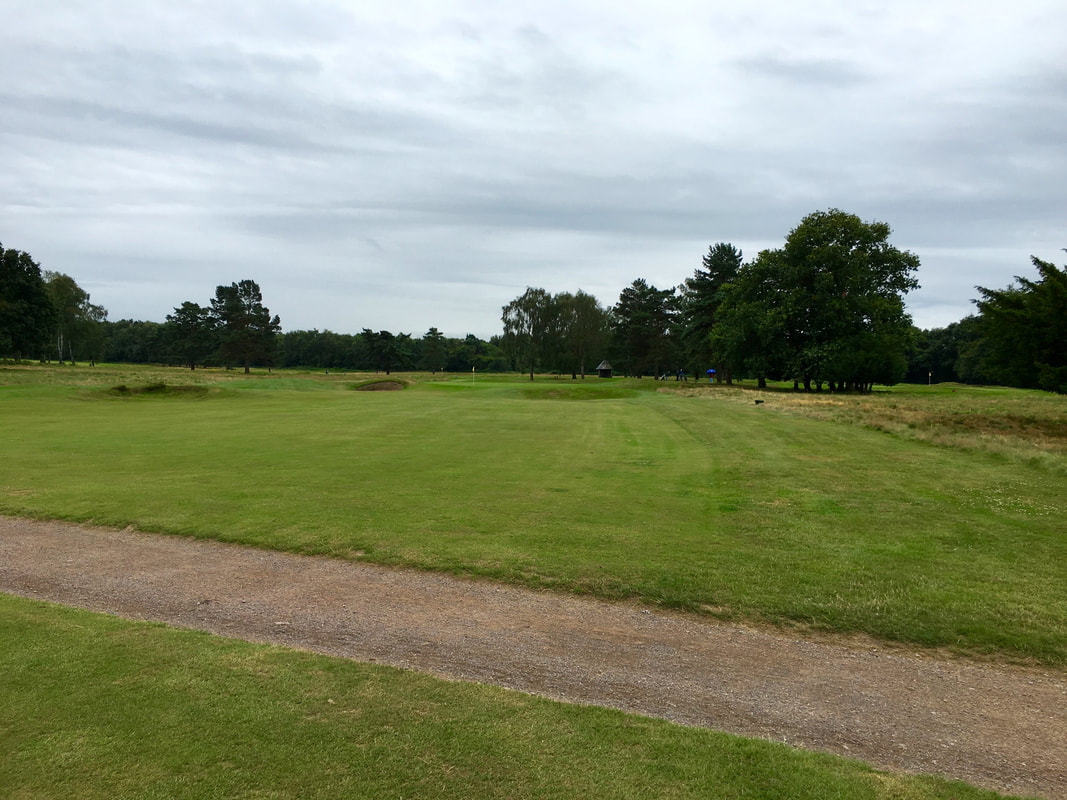
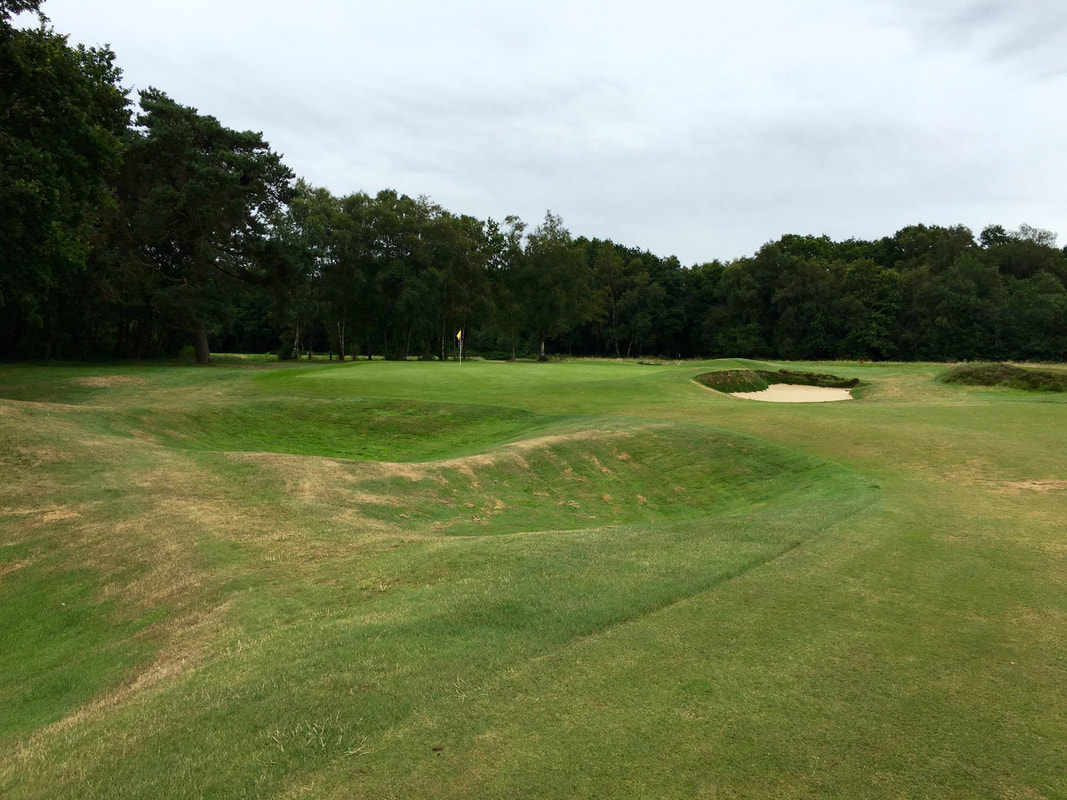
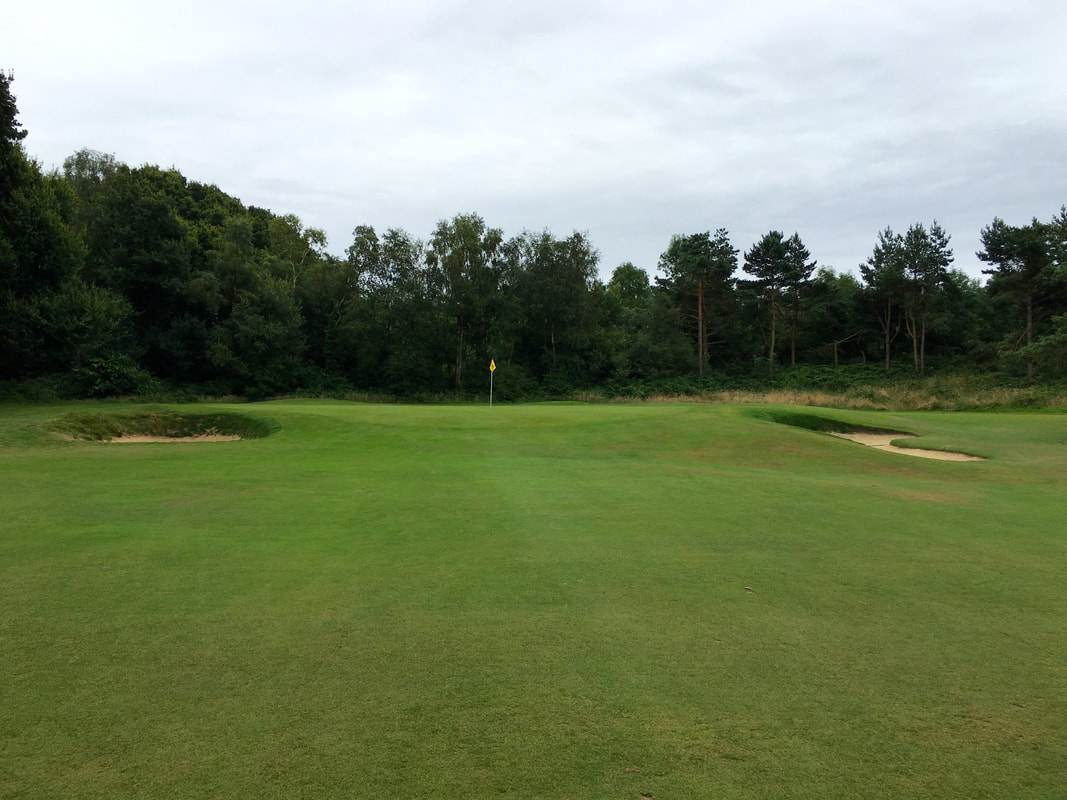
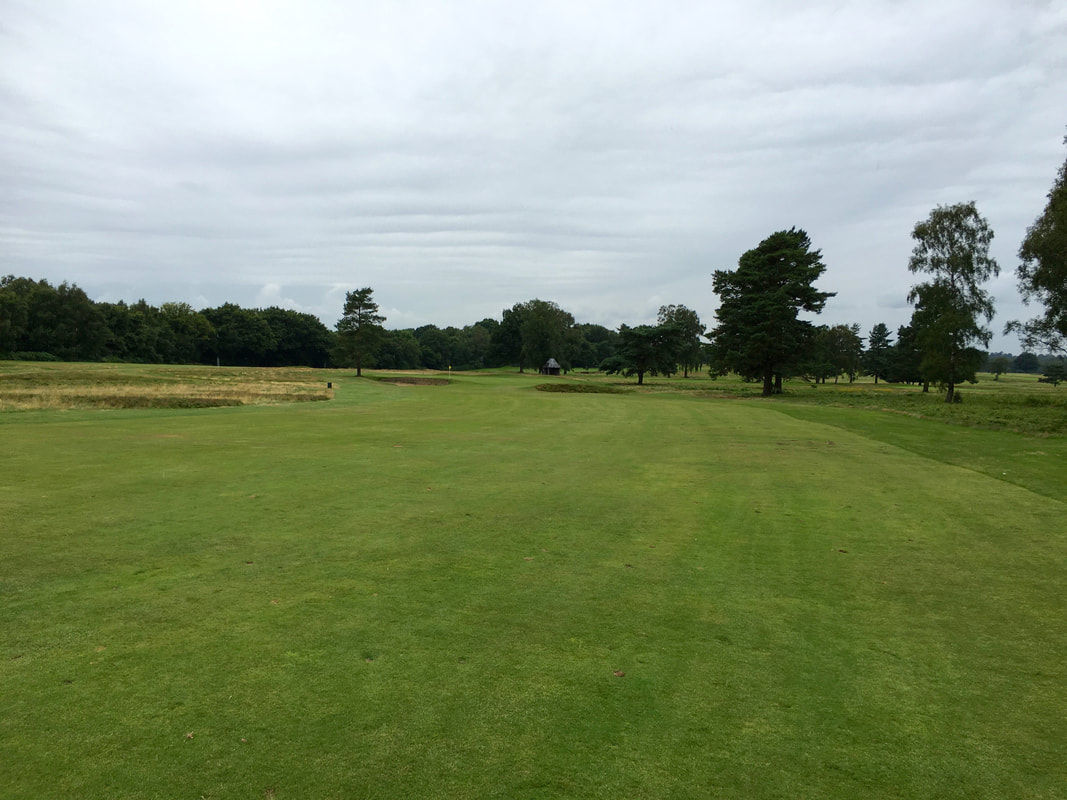
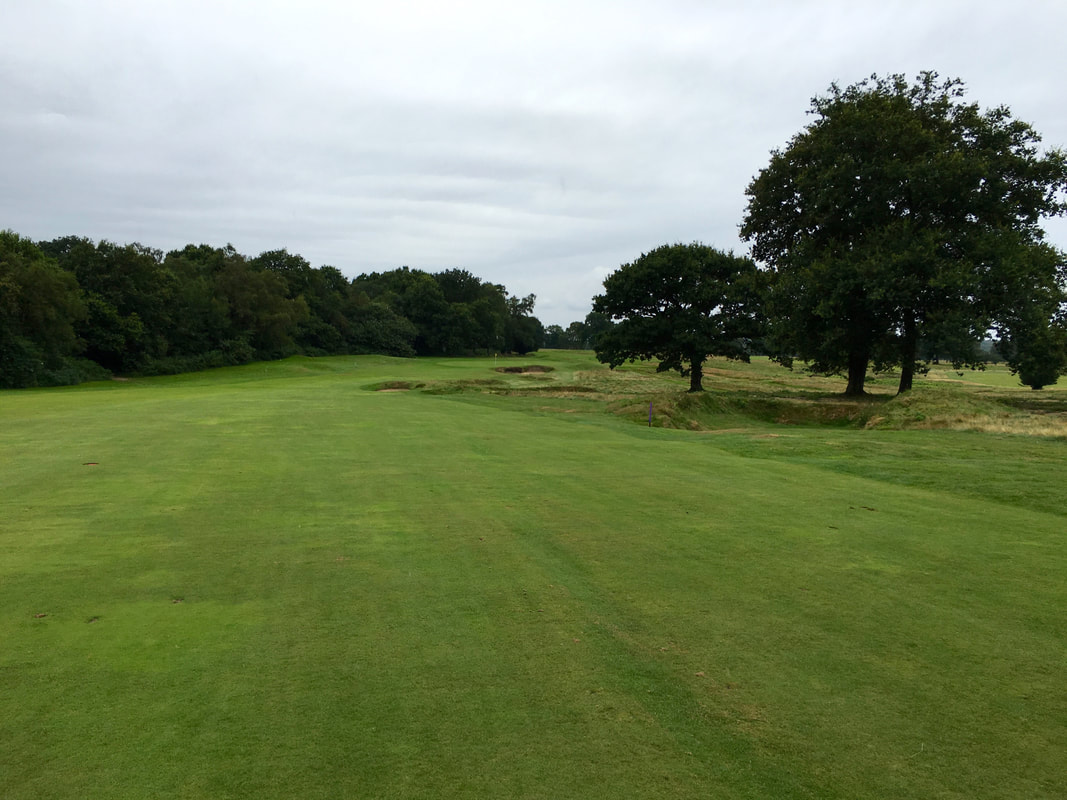
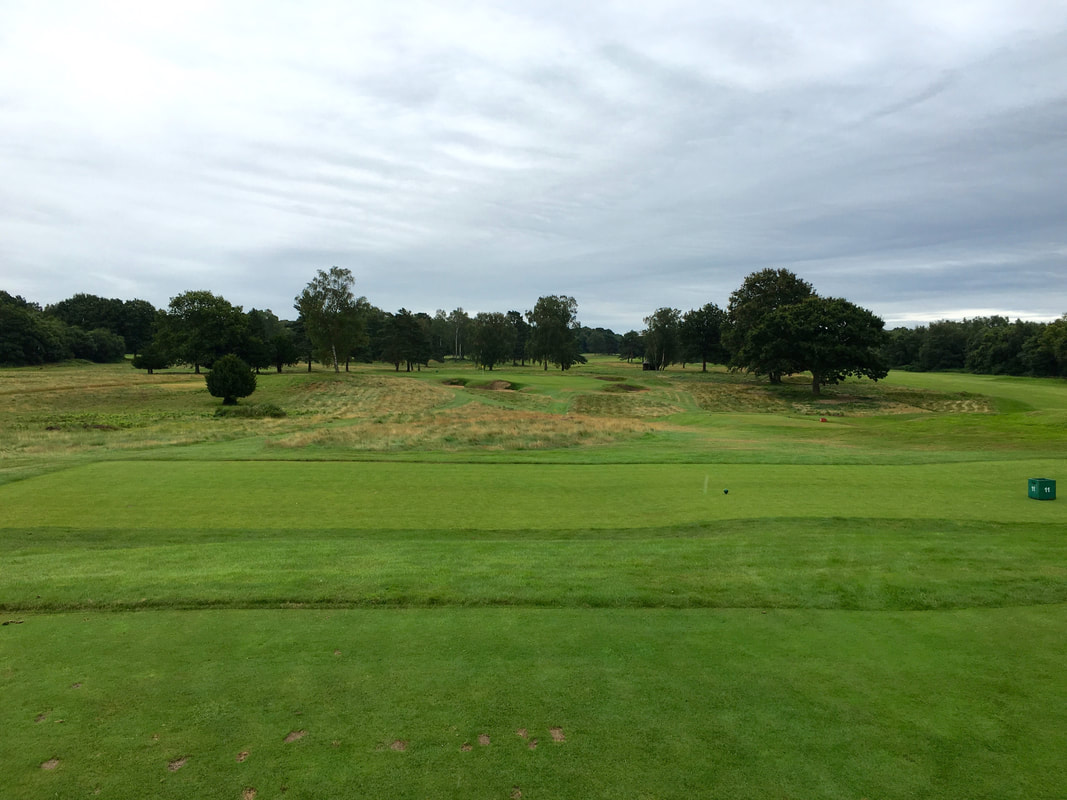
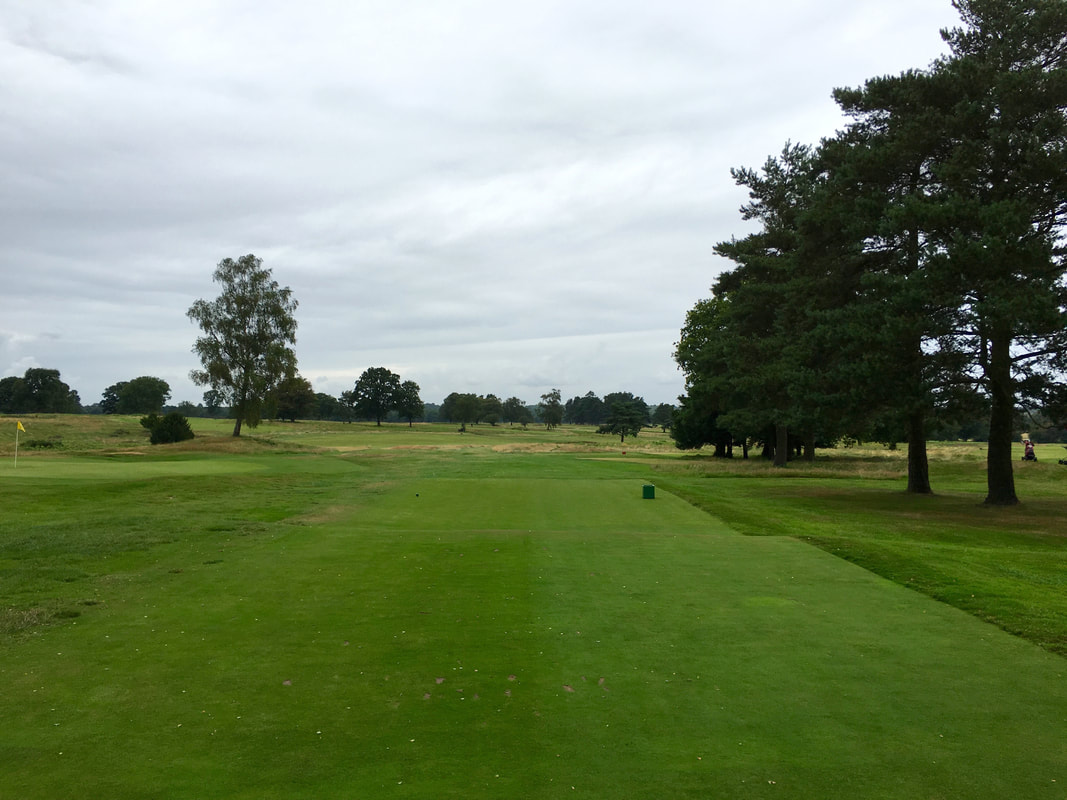
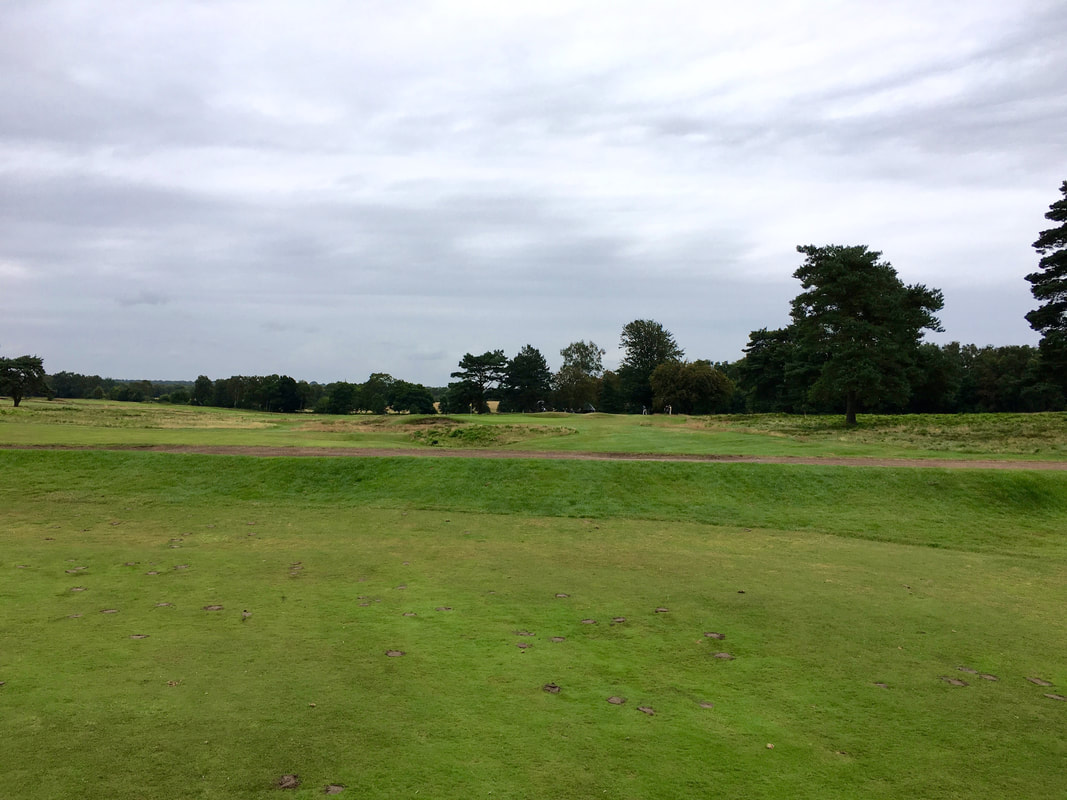
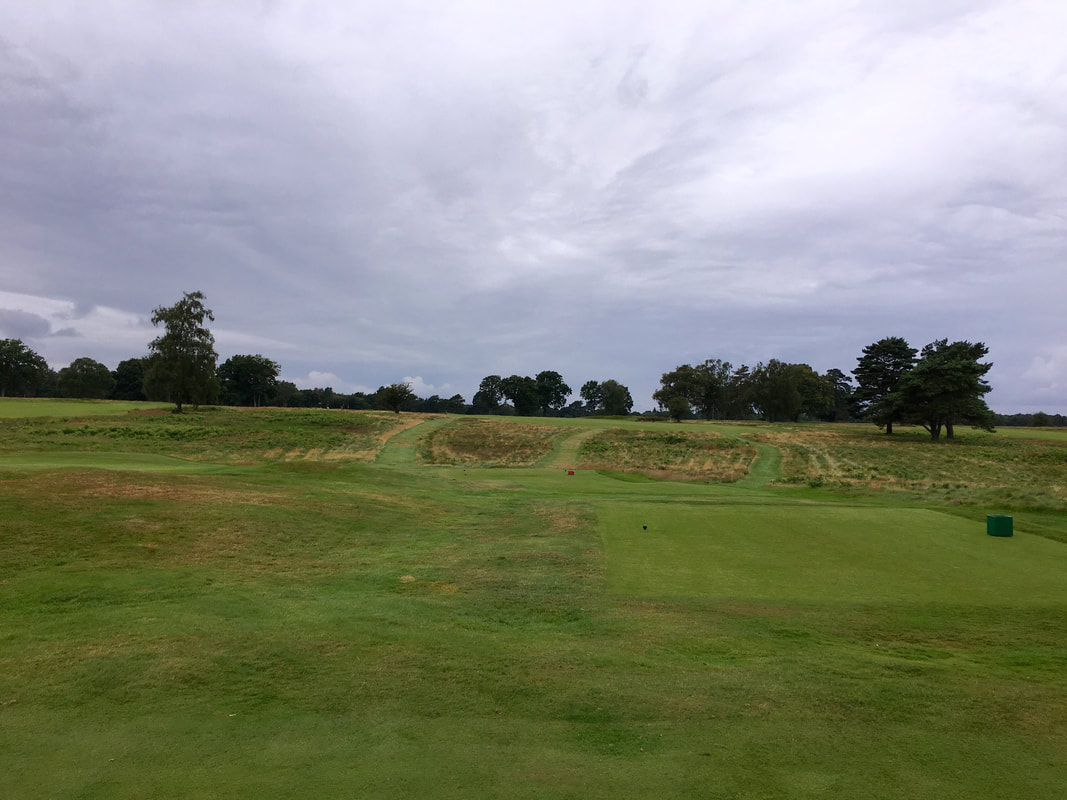
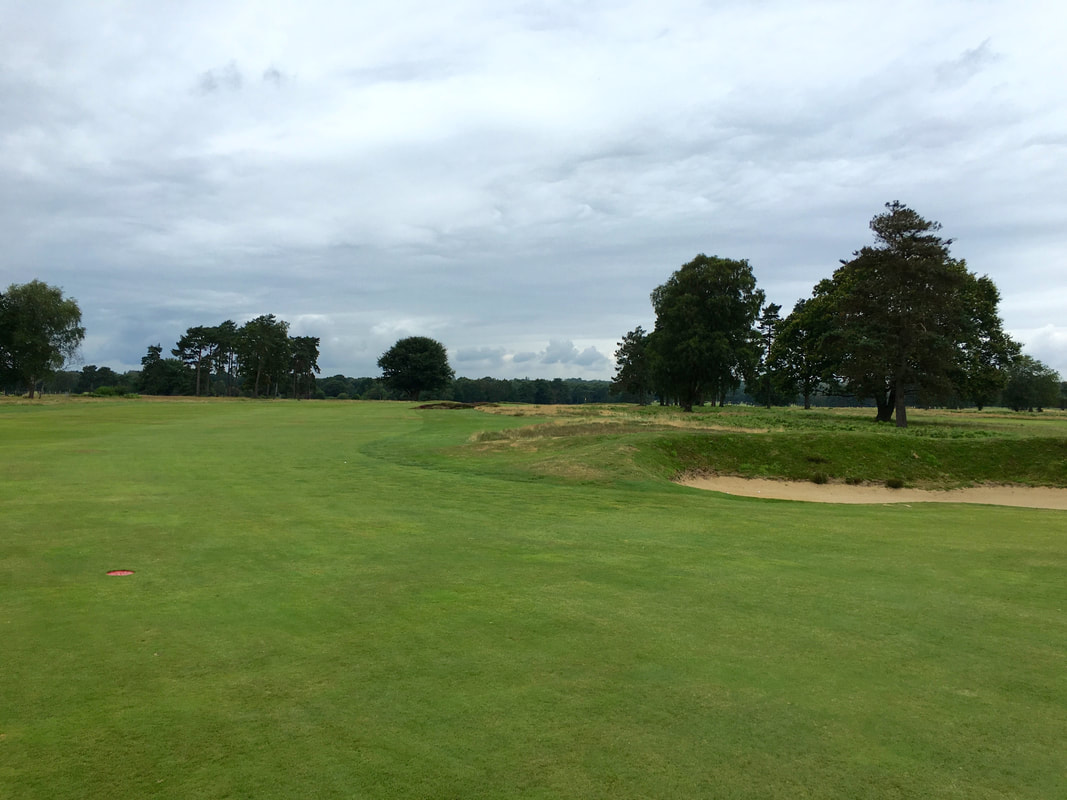
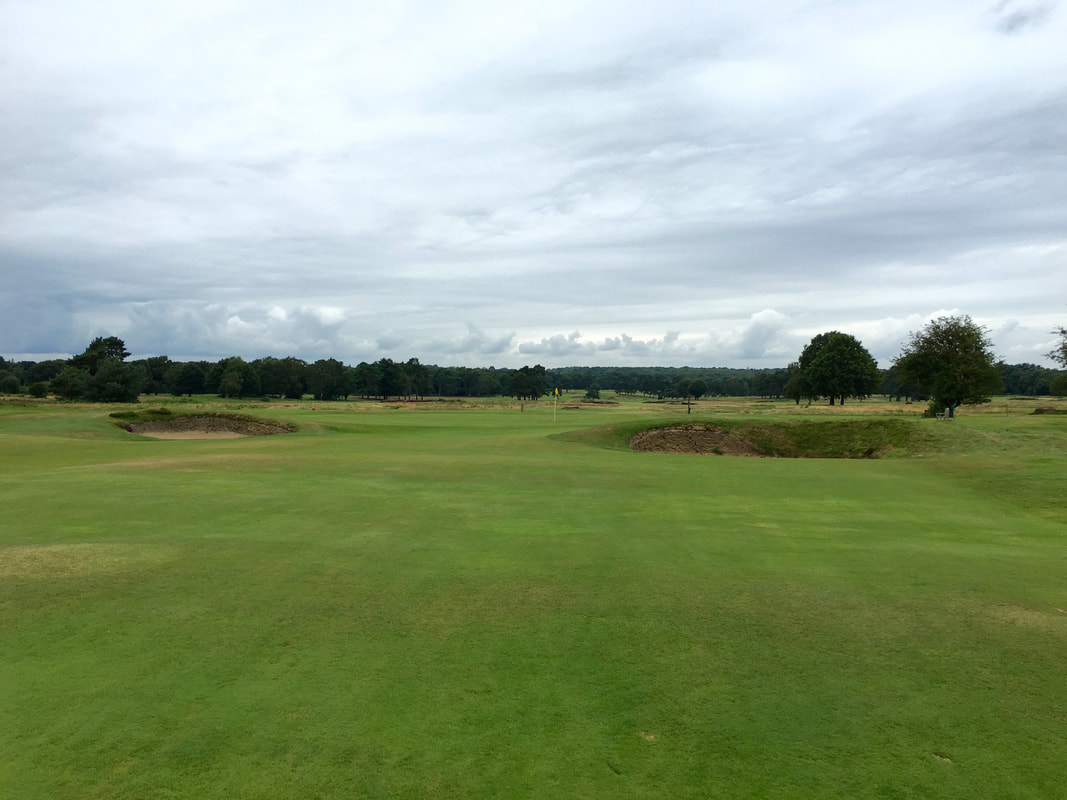
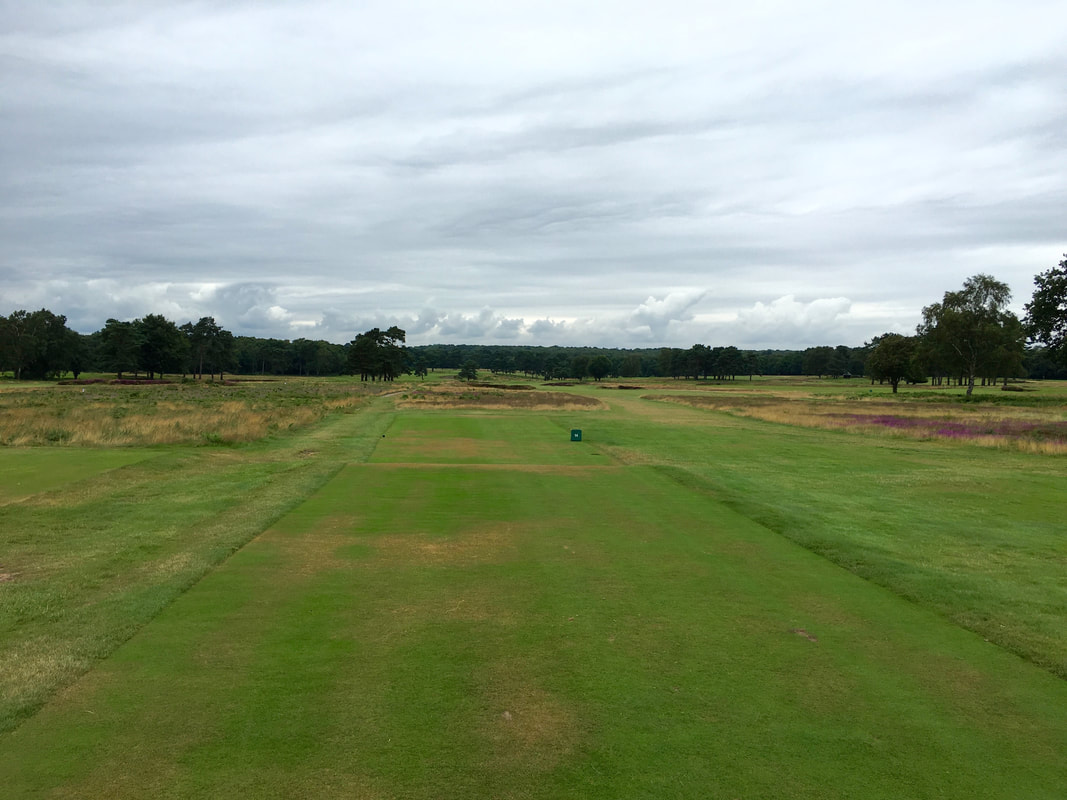
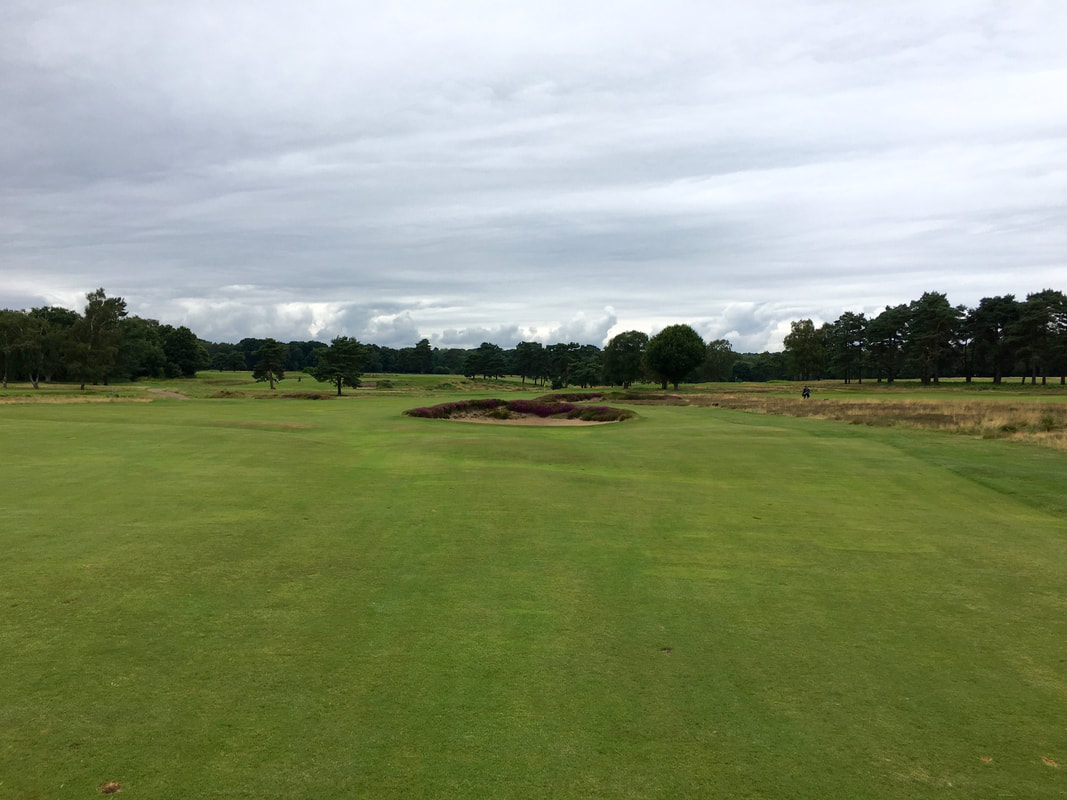
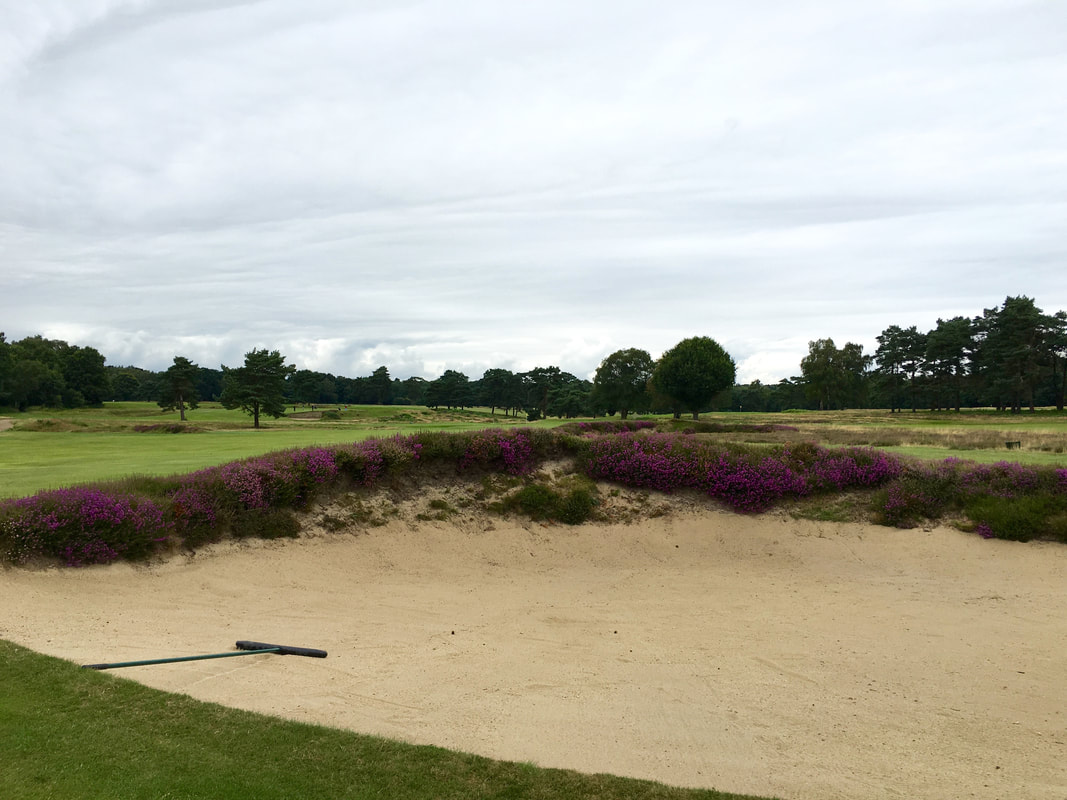
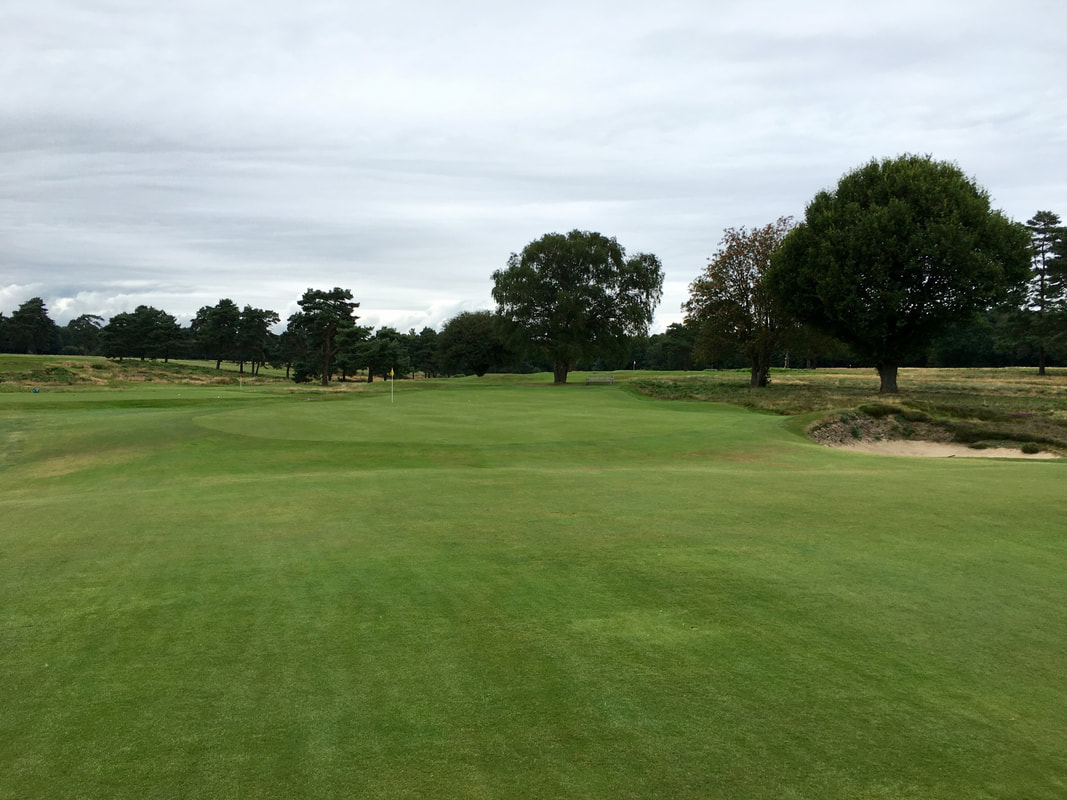
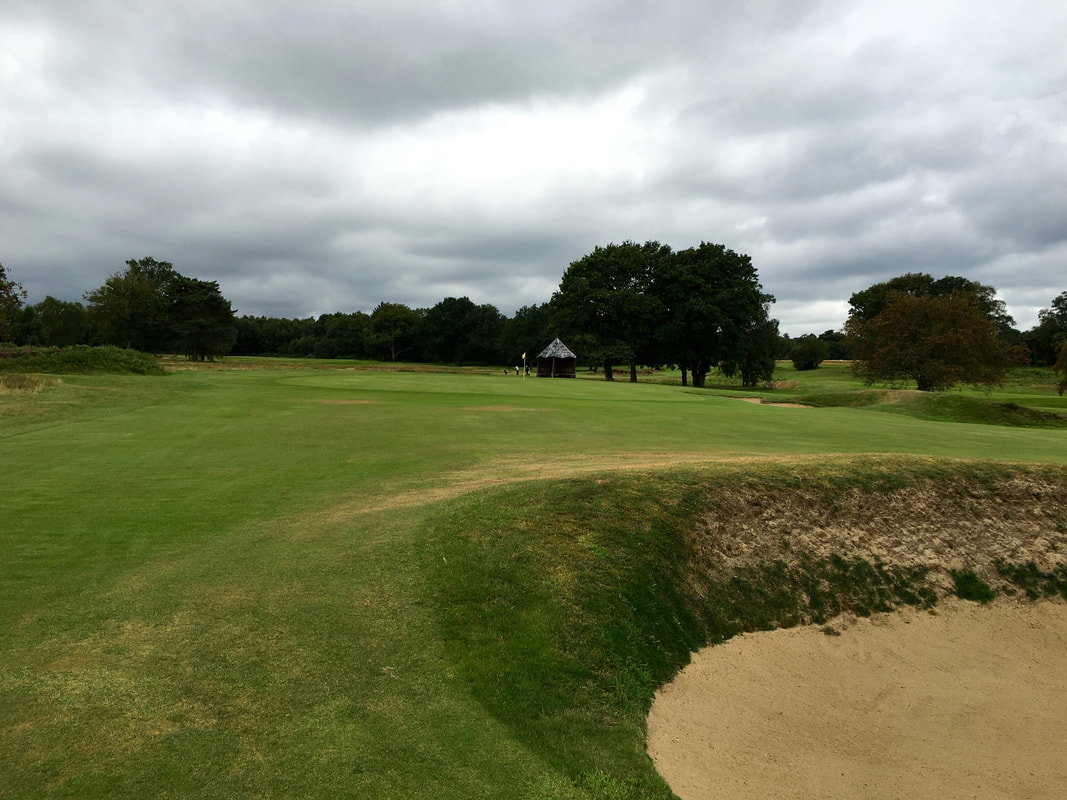
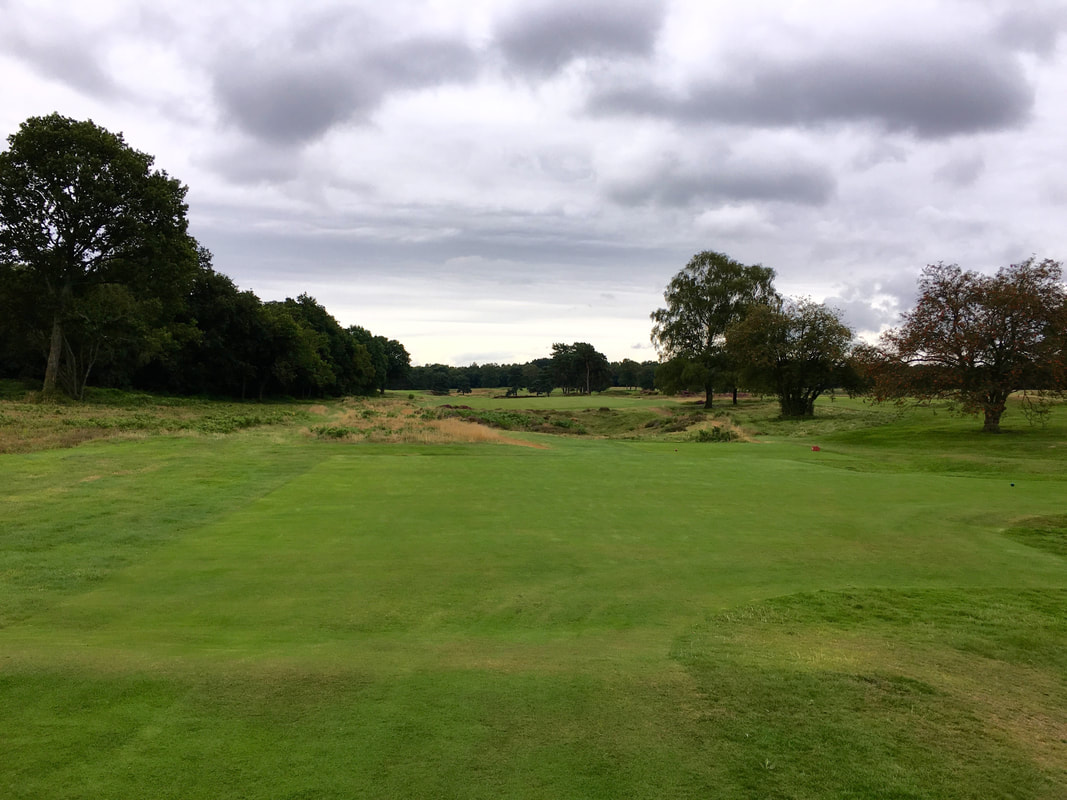
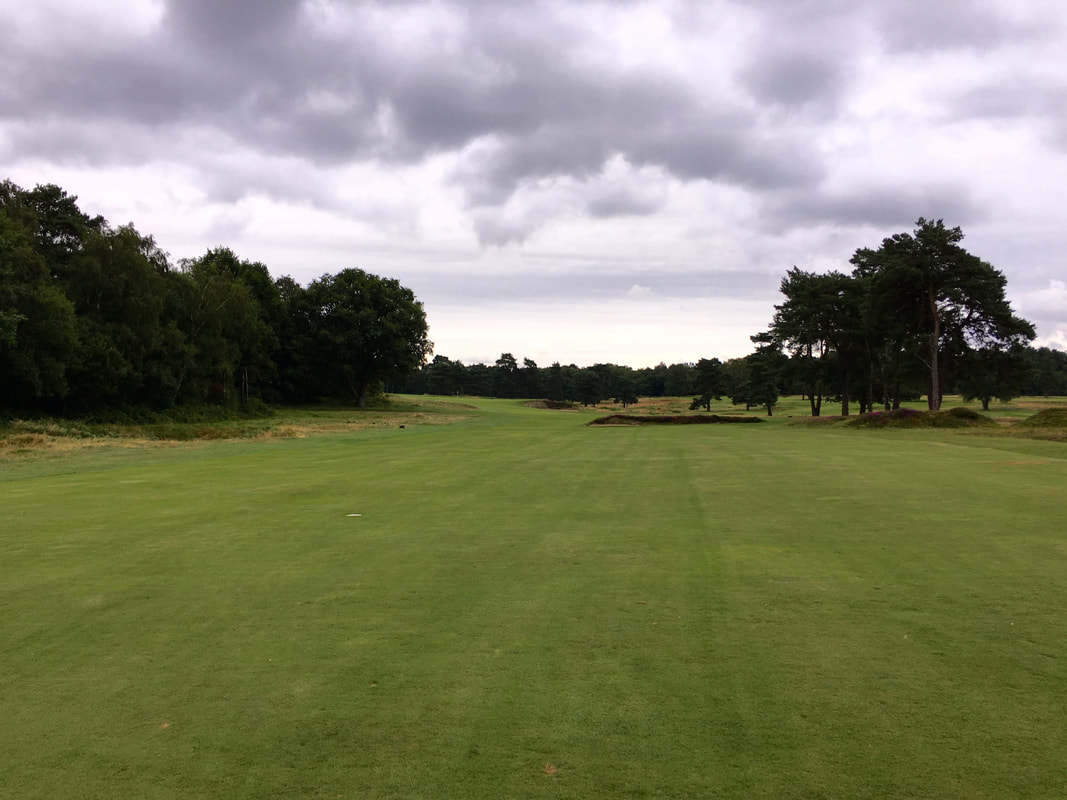
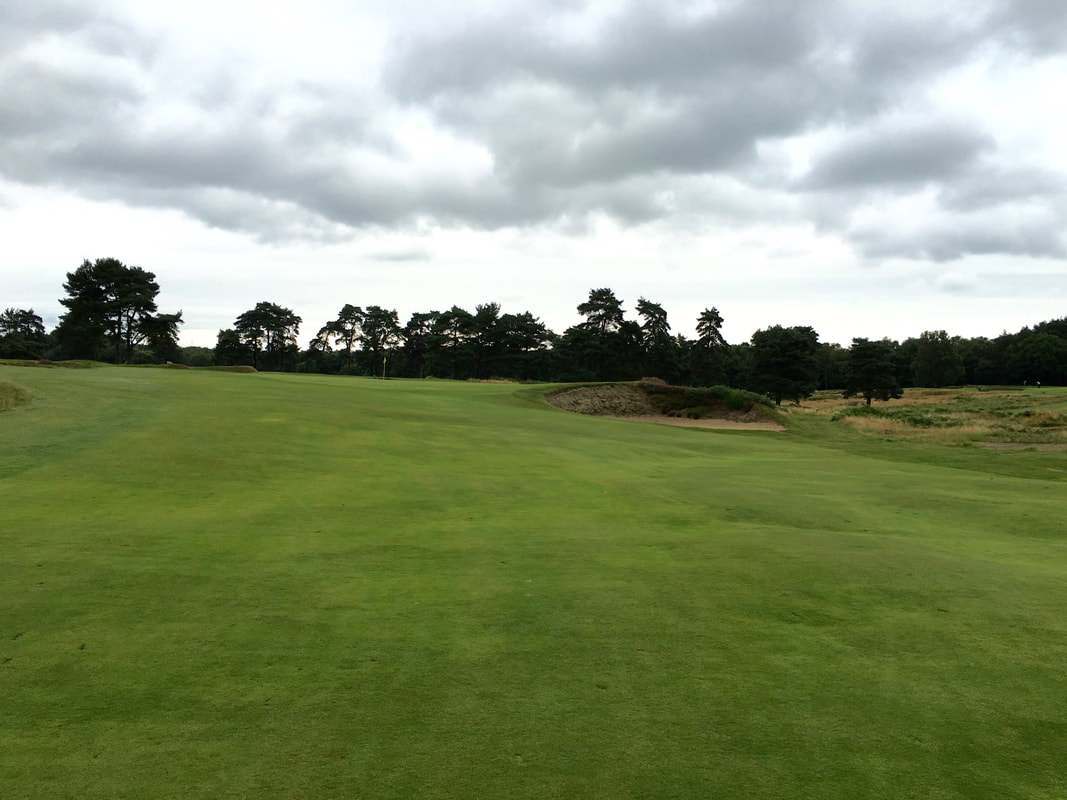
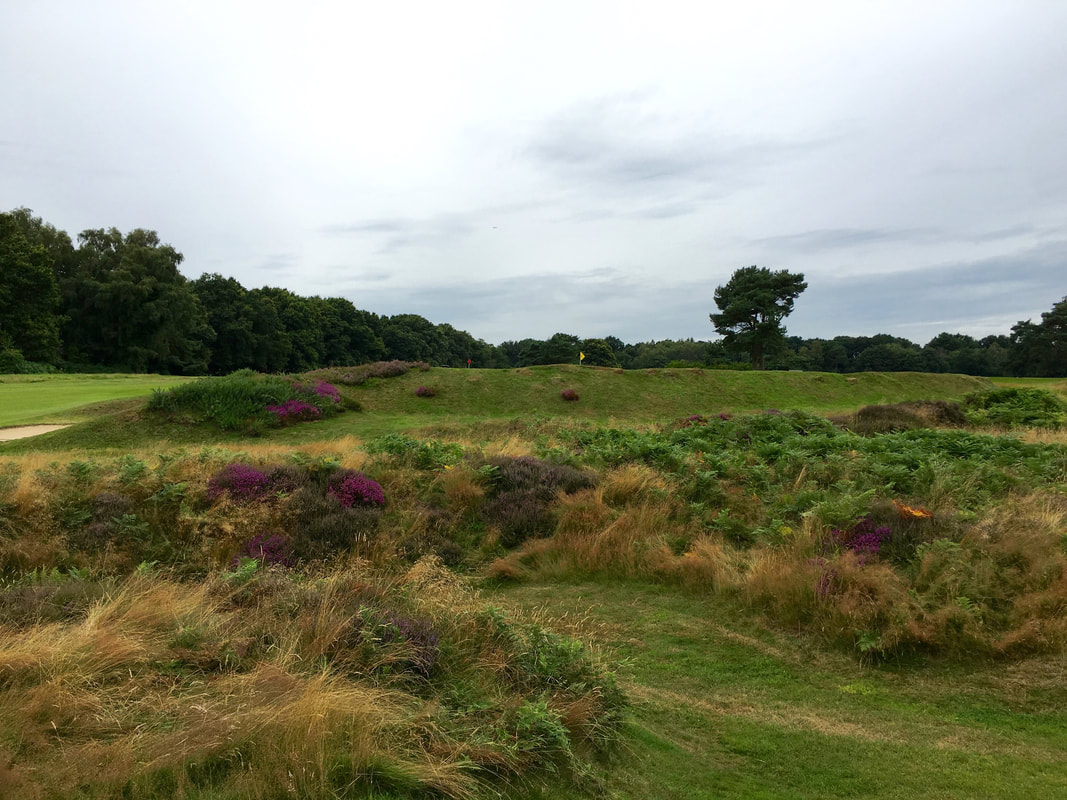
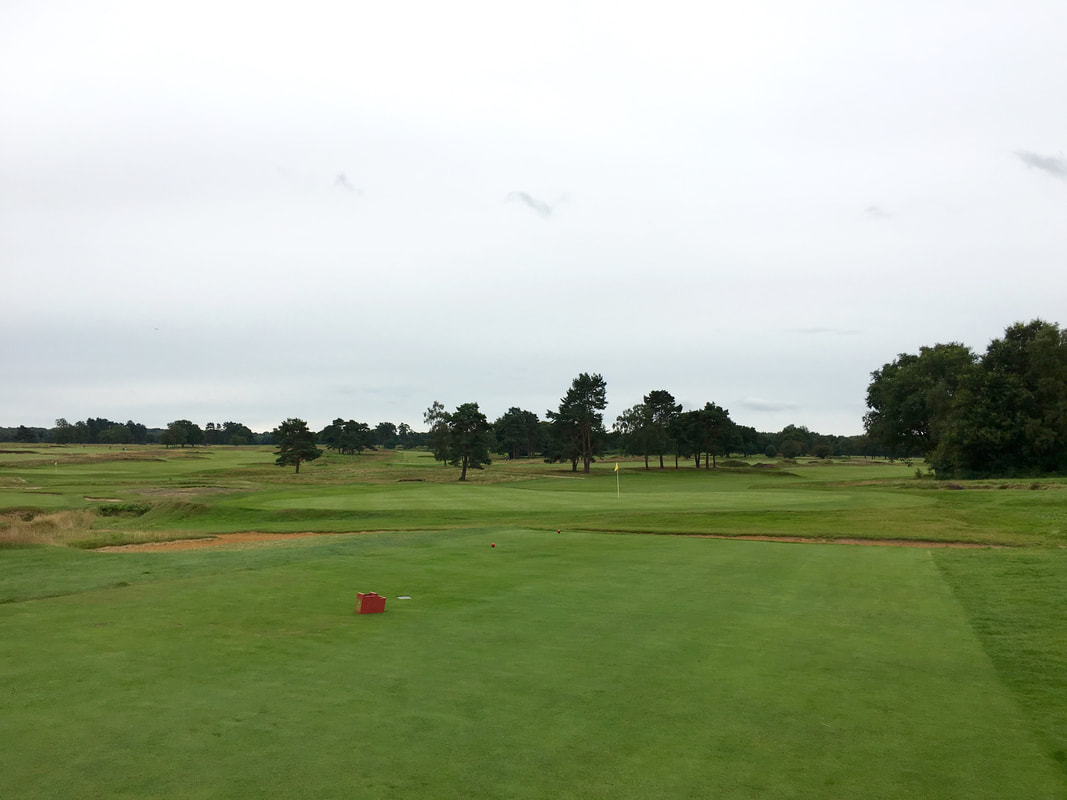
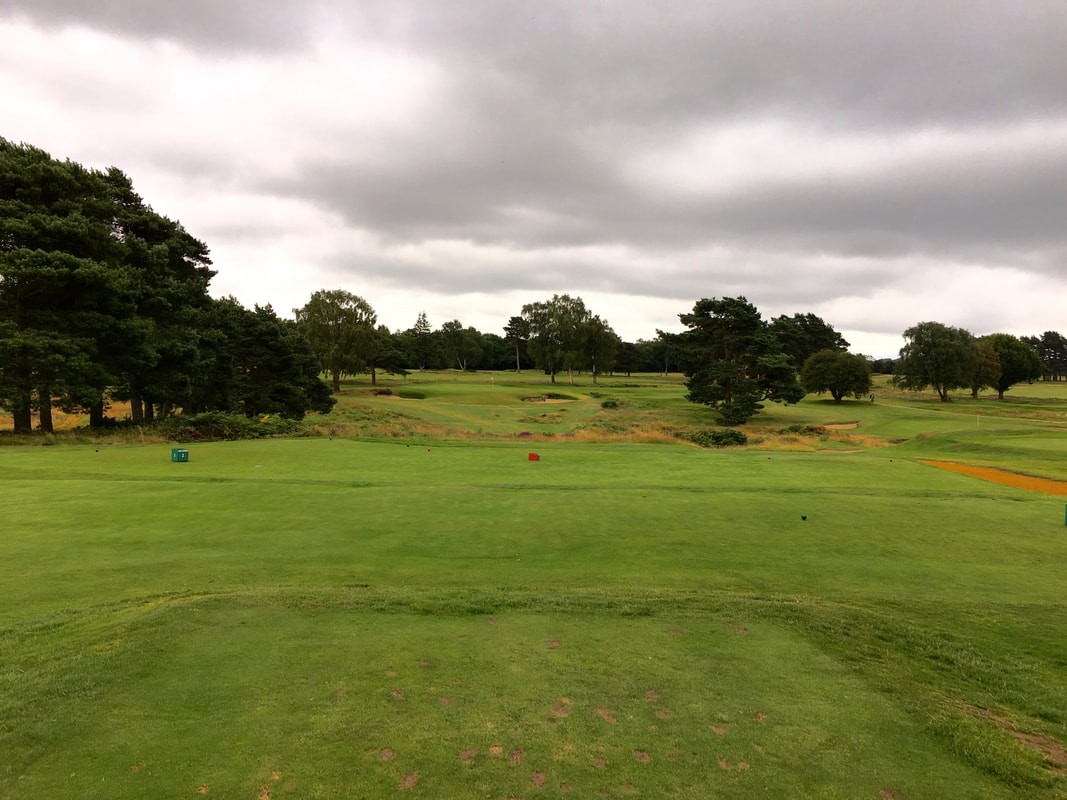
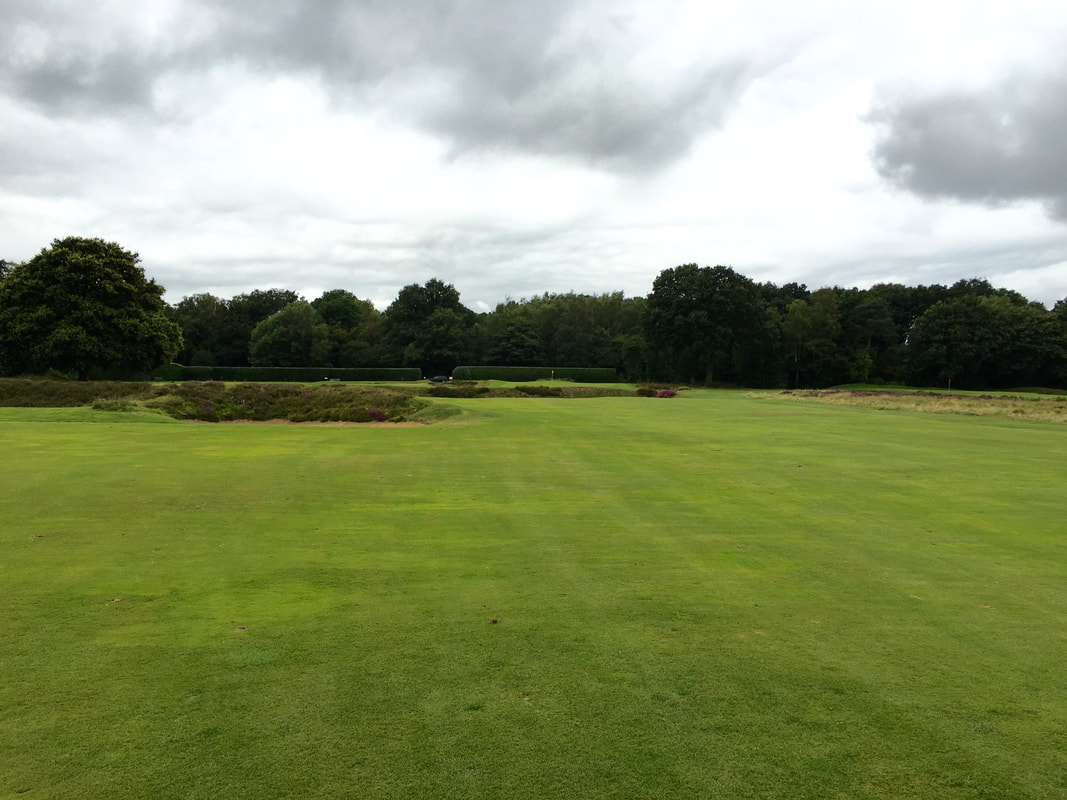
 RSS Feed
RSS Feed